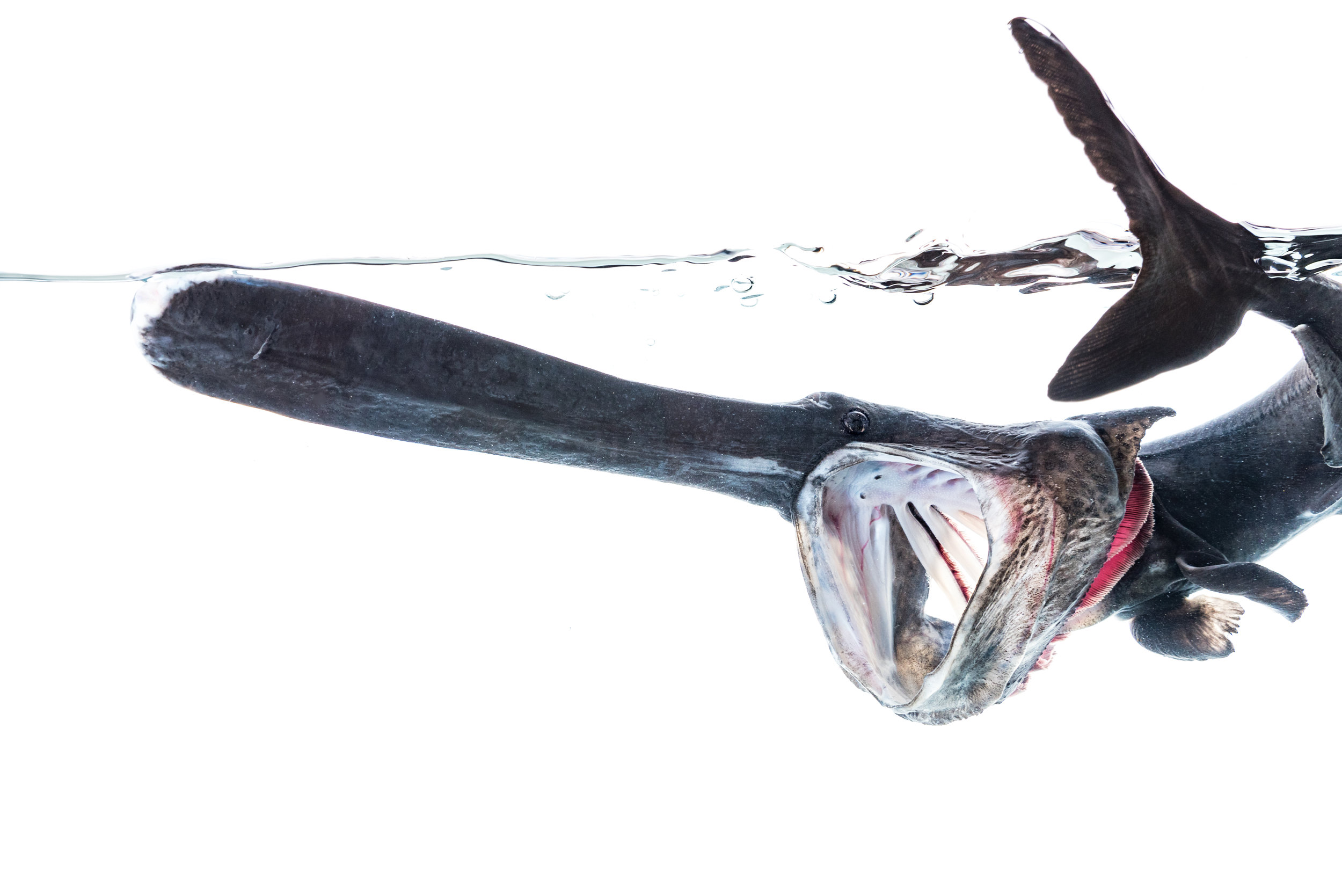
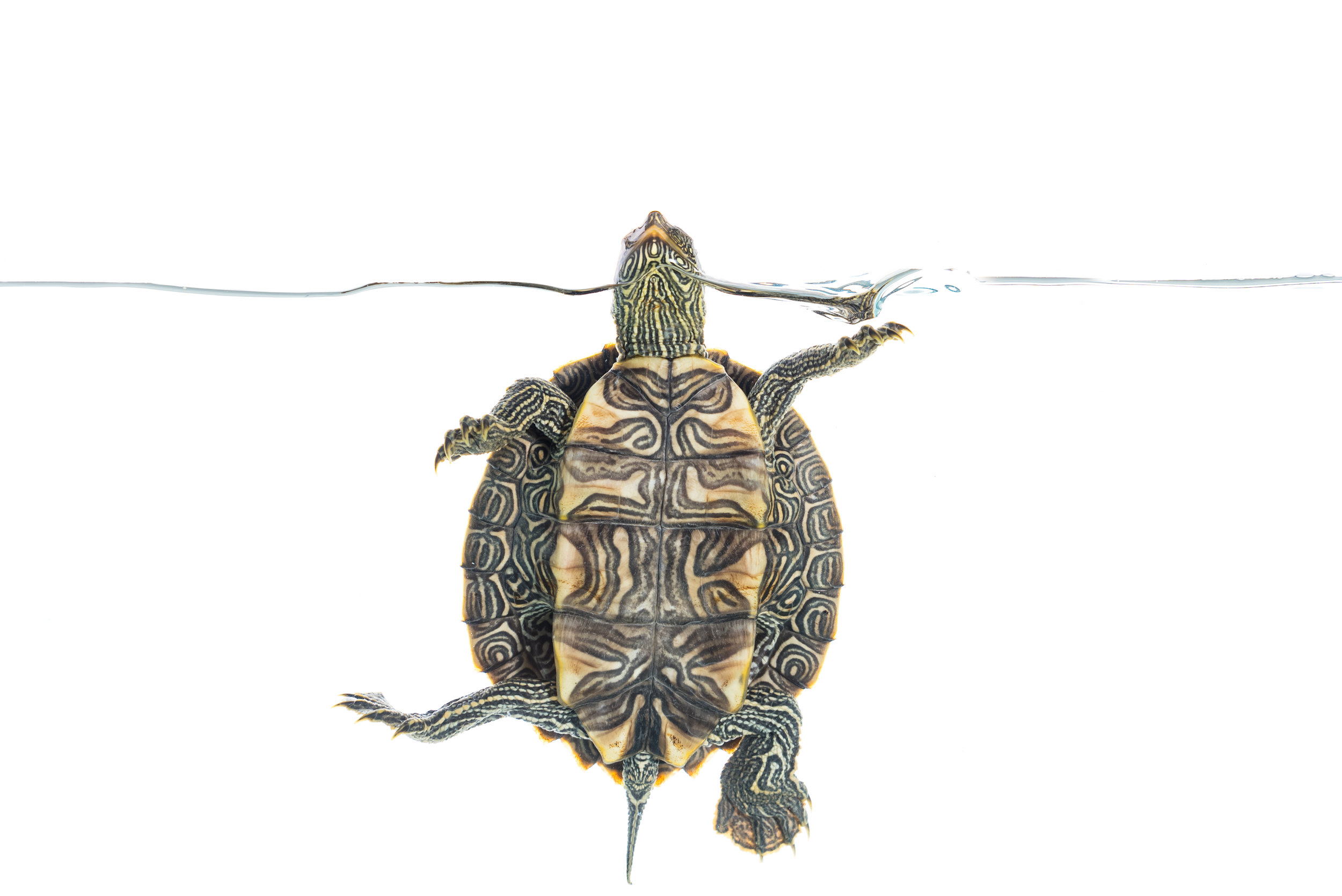
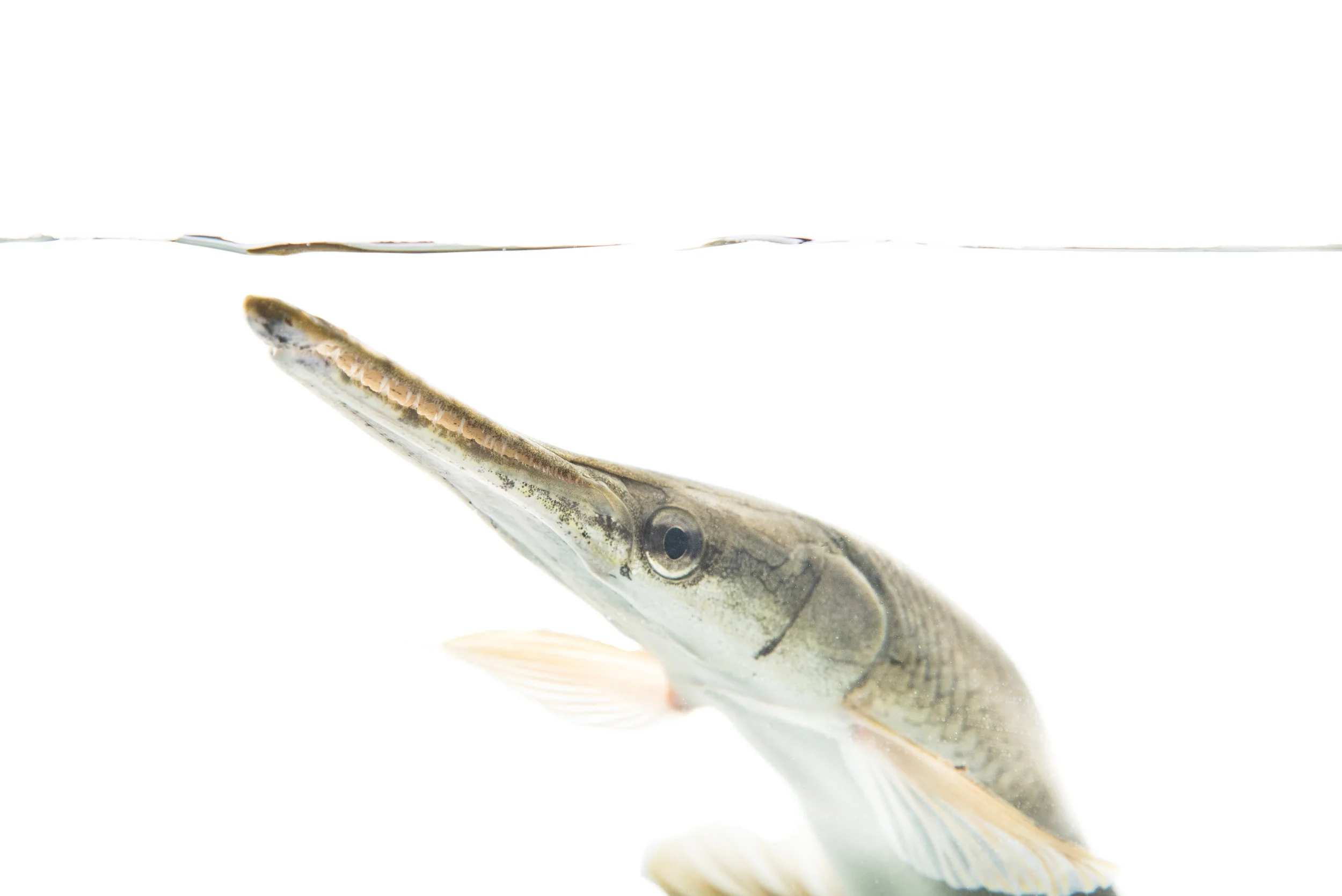

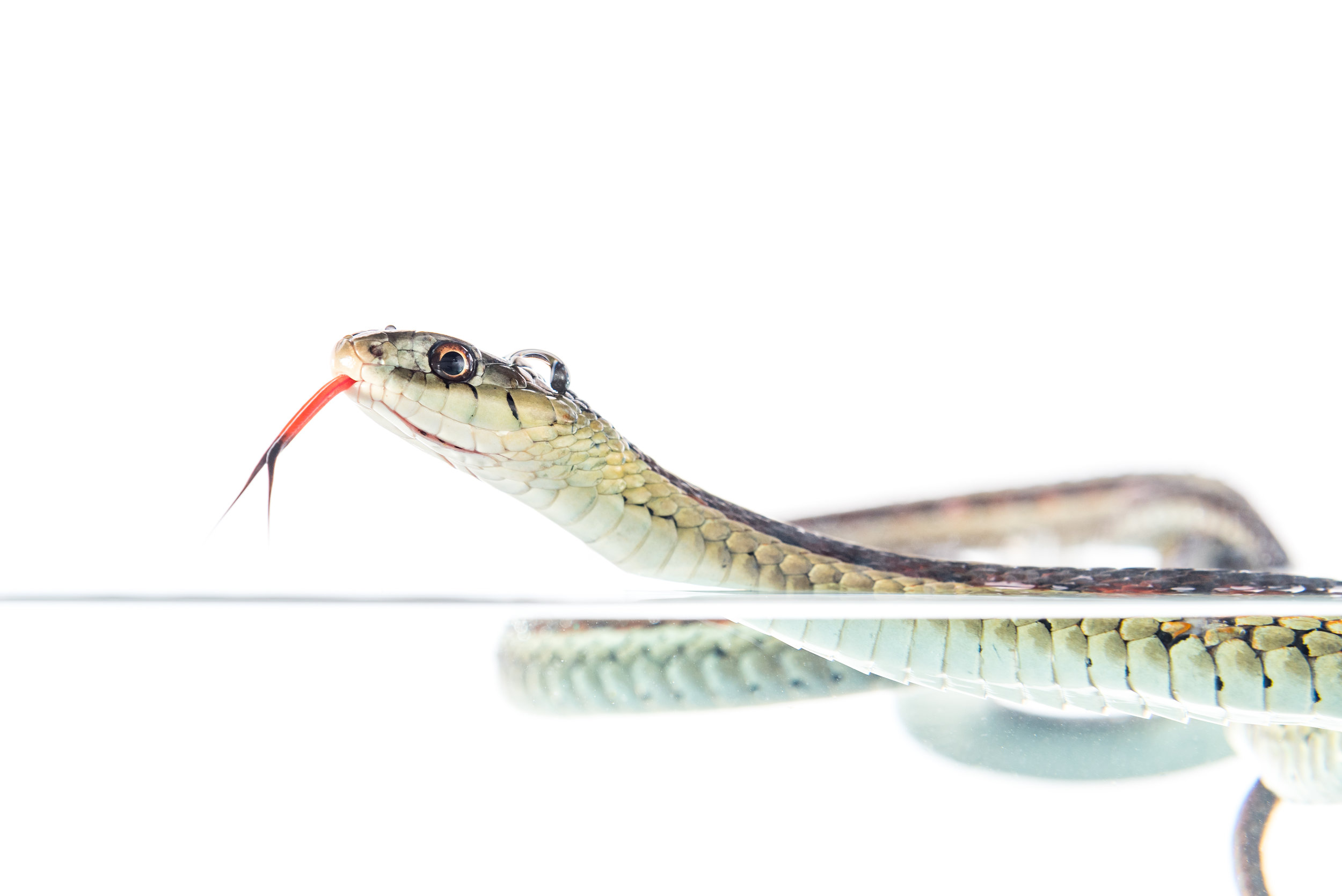
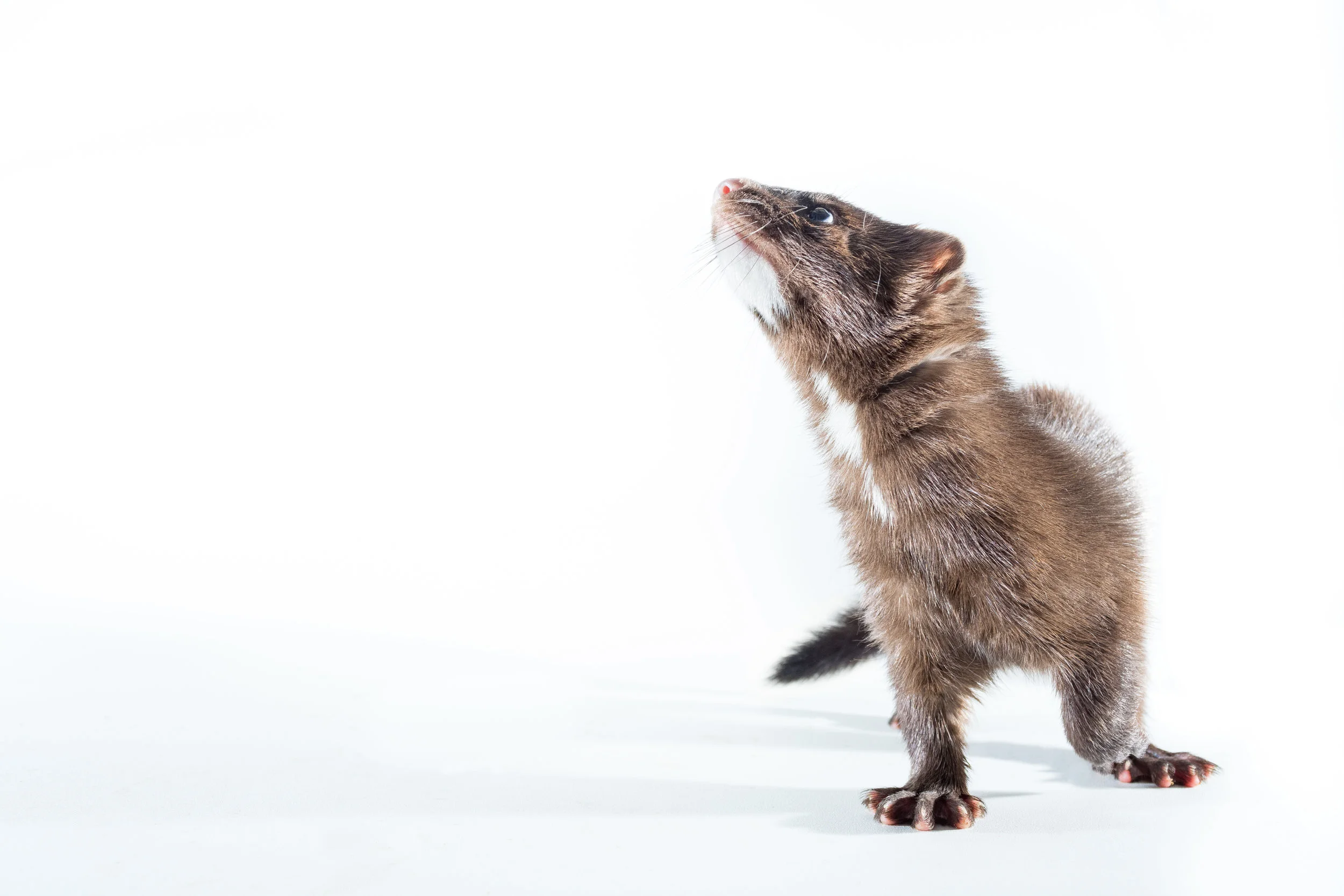
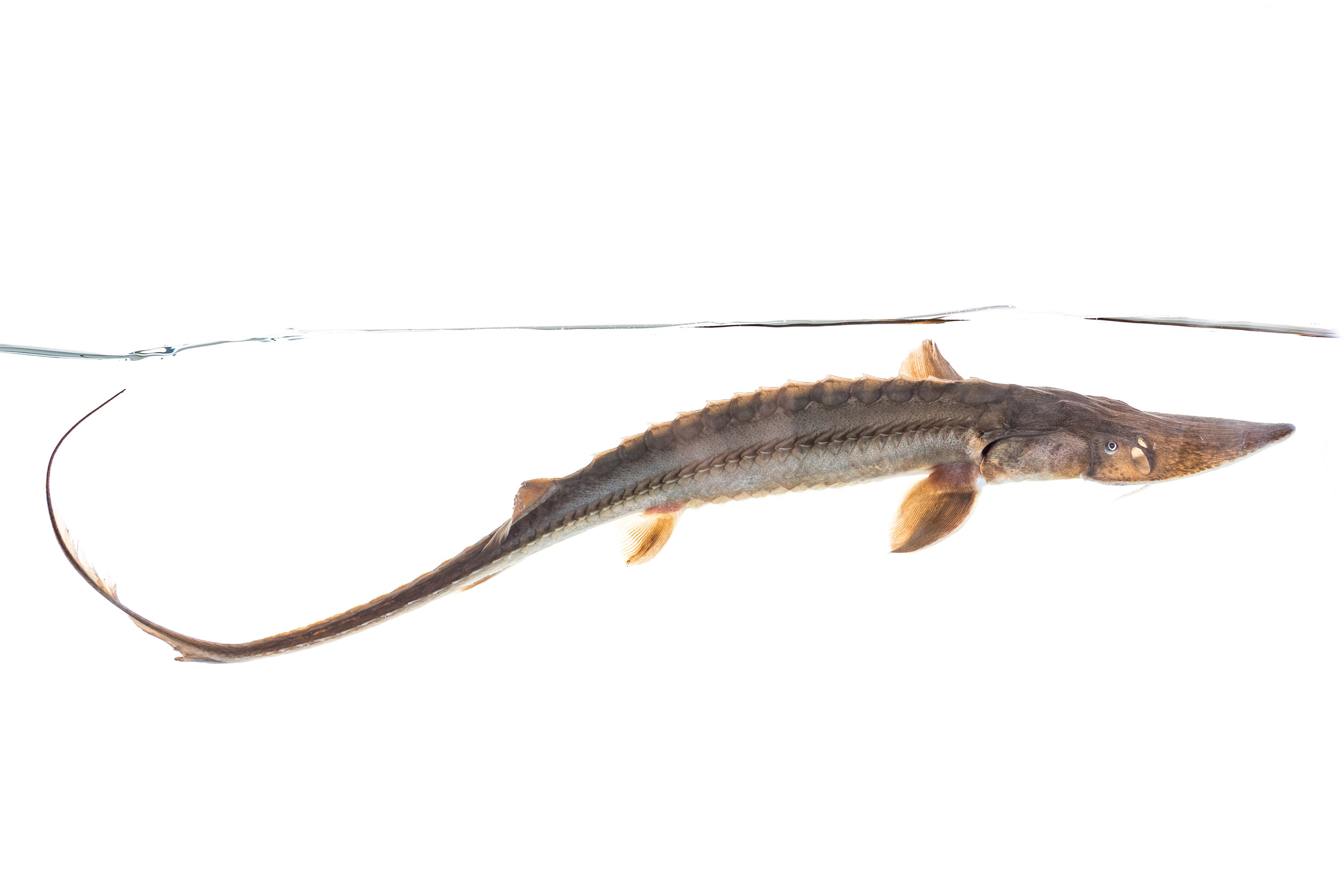
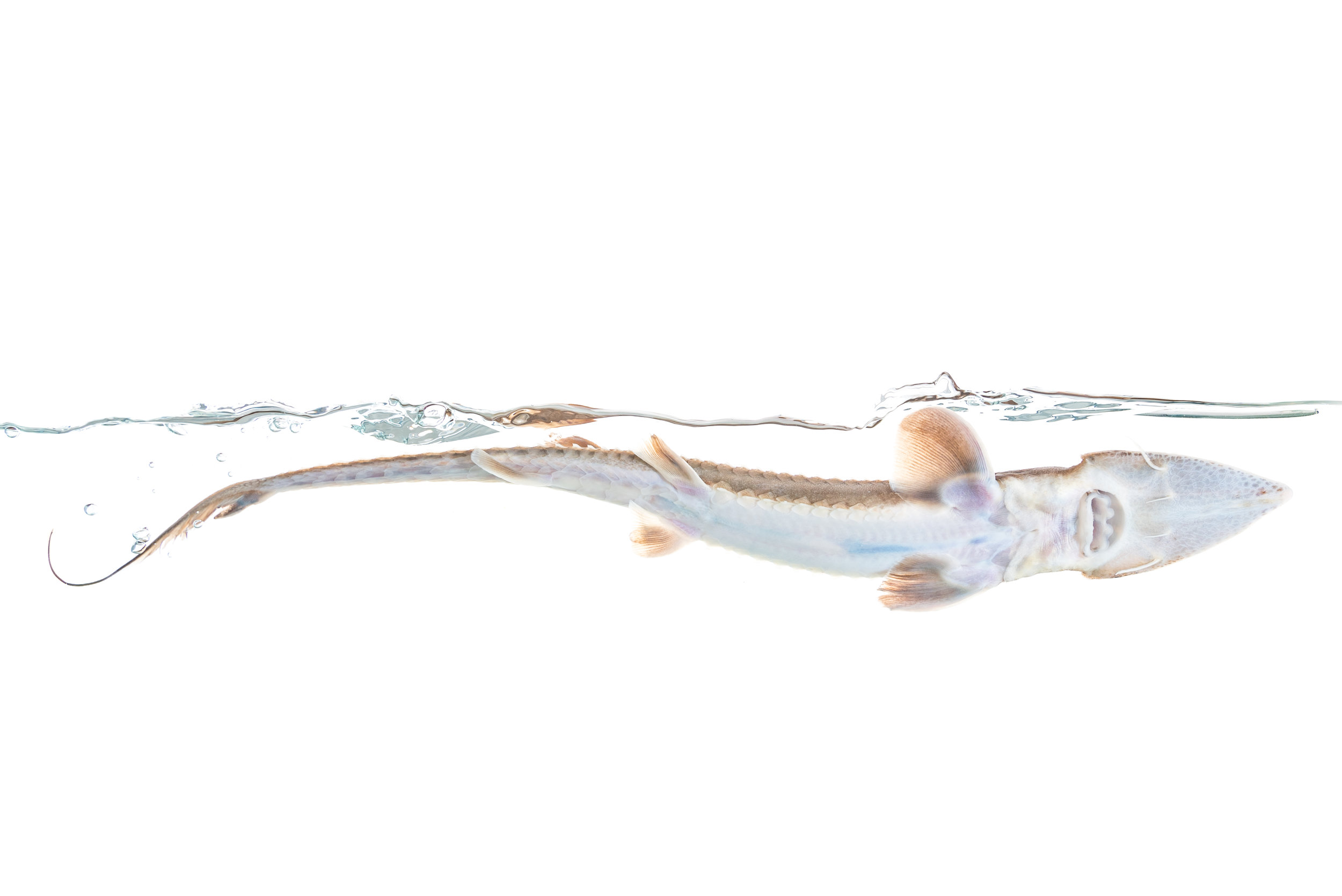
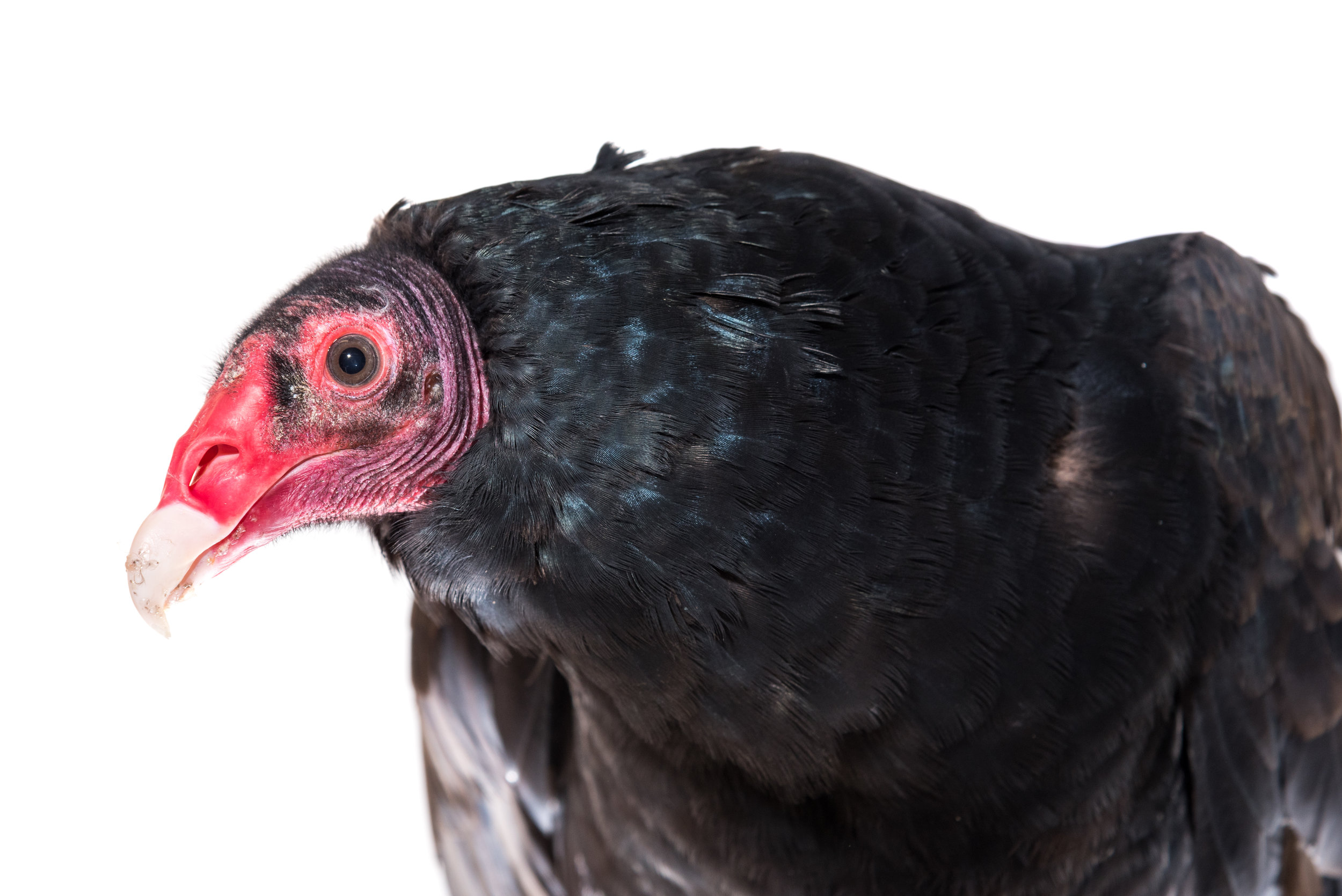

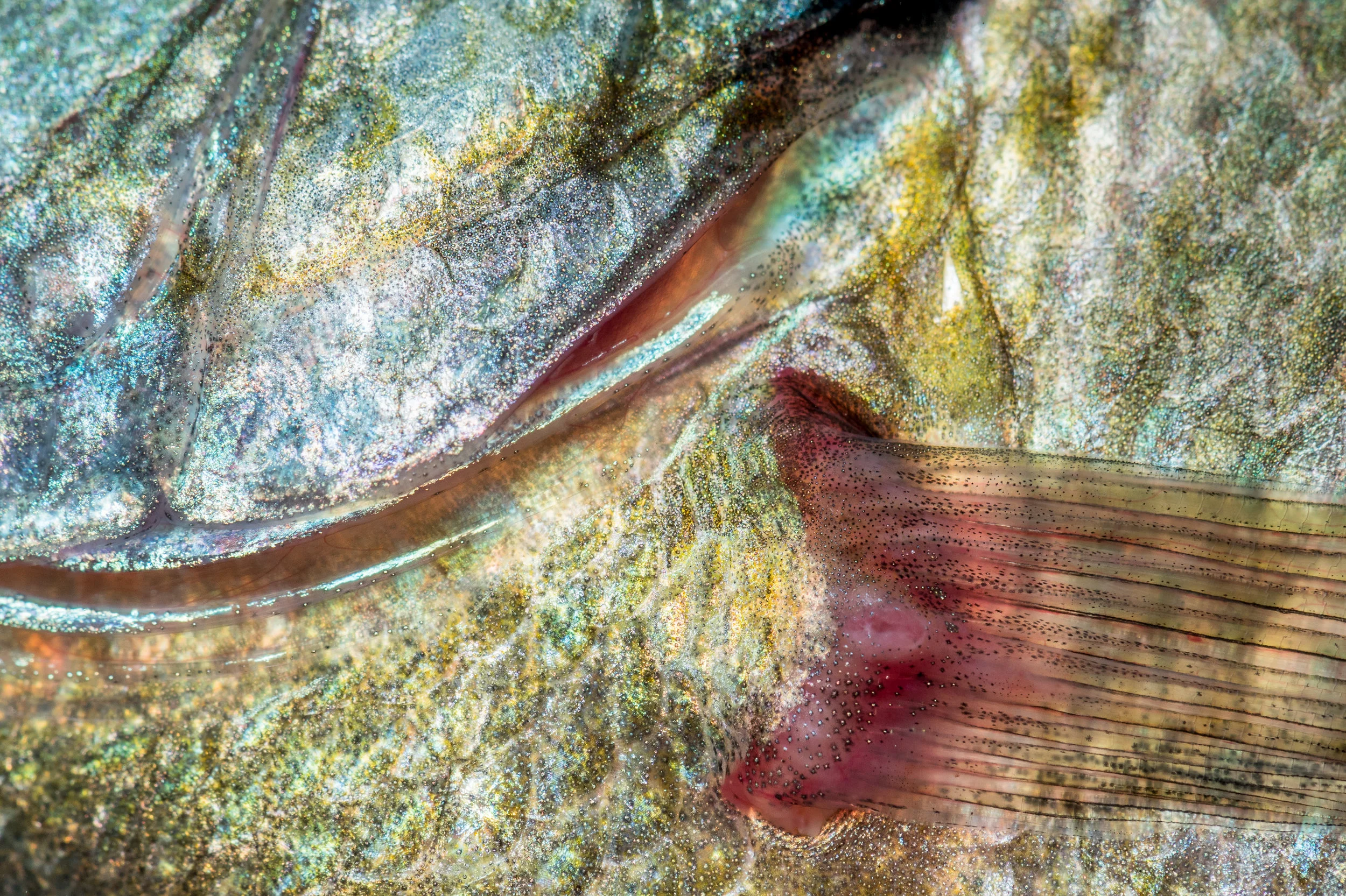
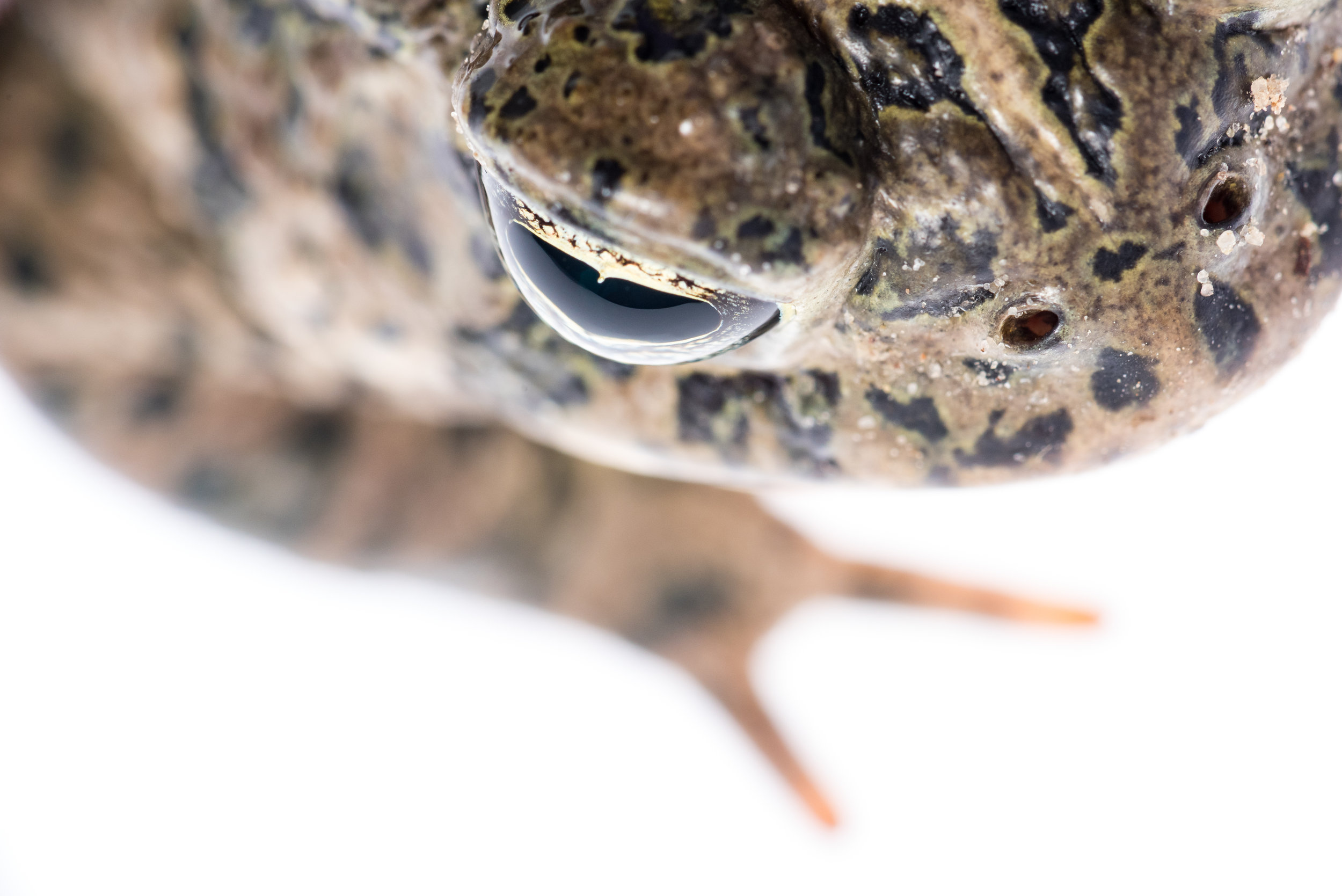
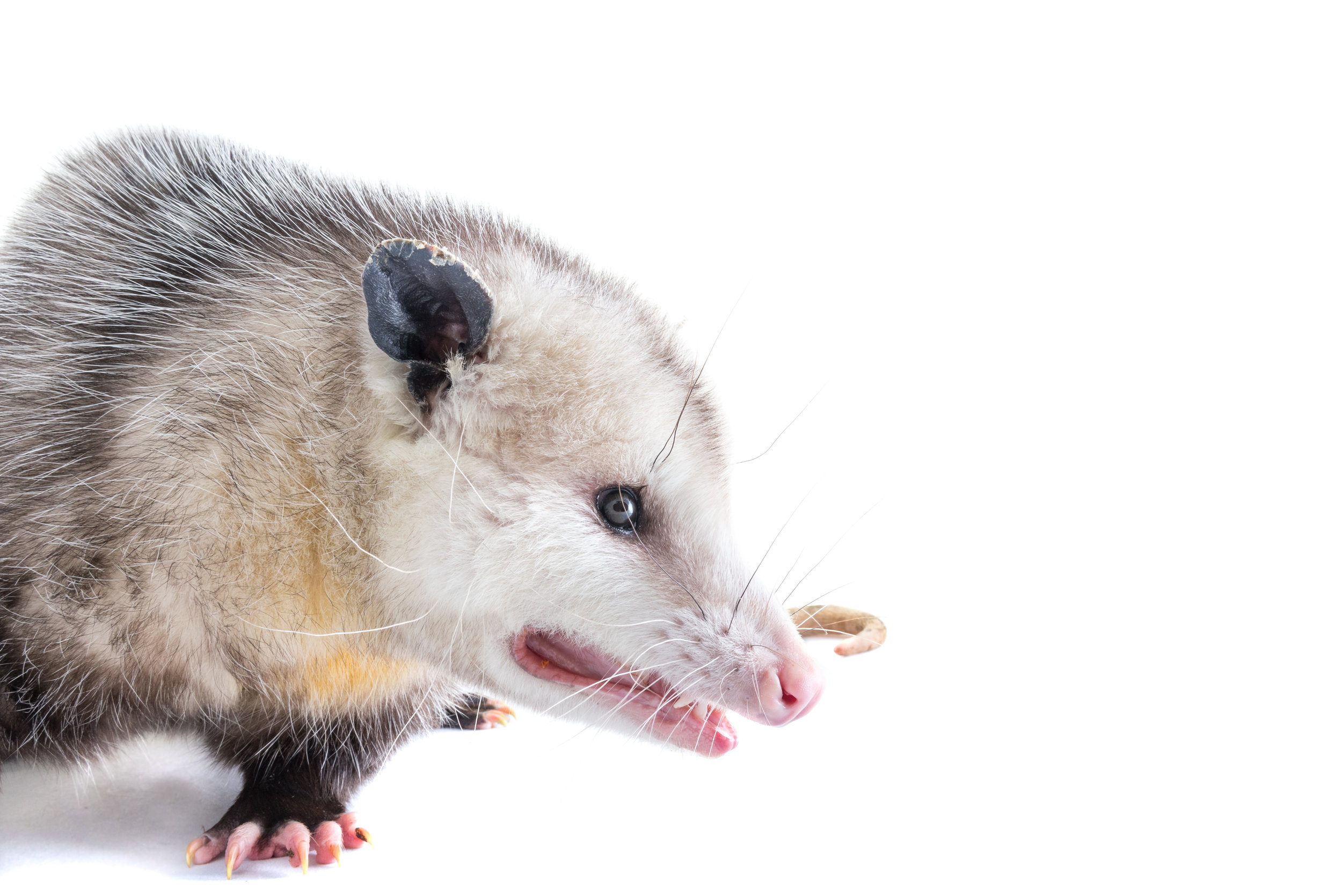
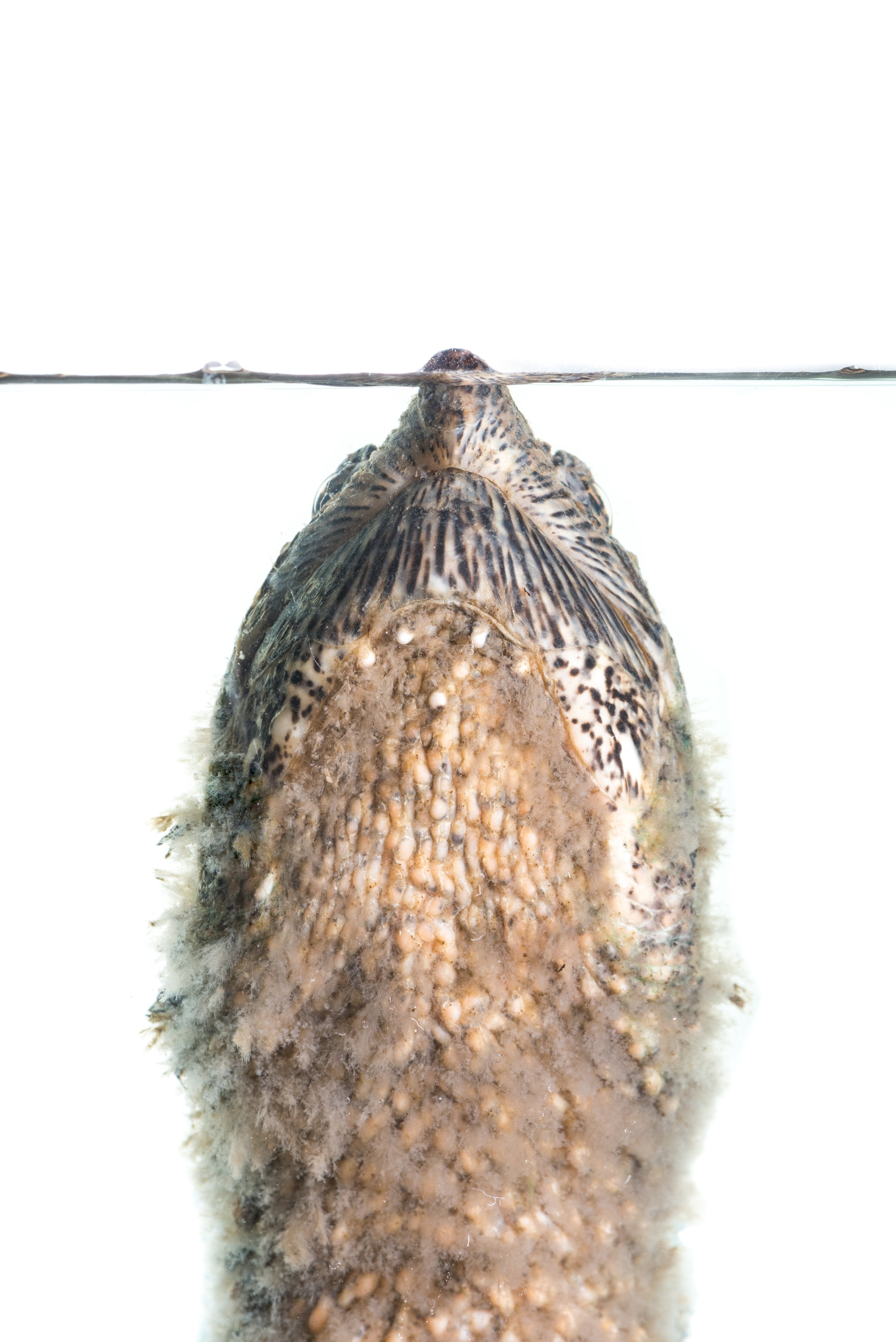
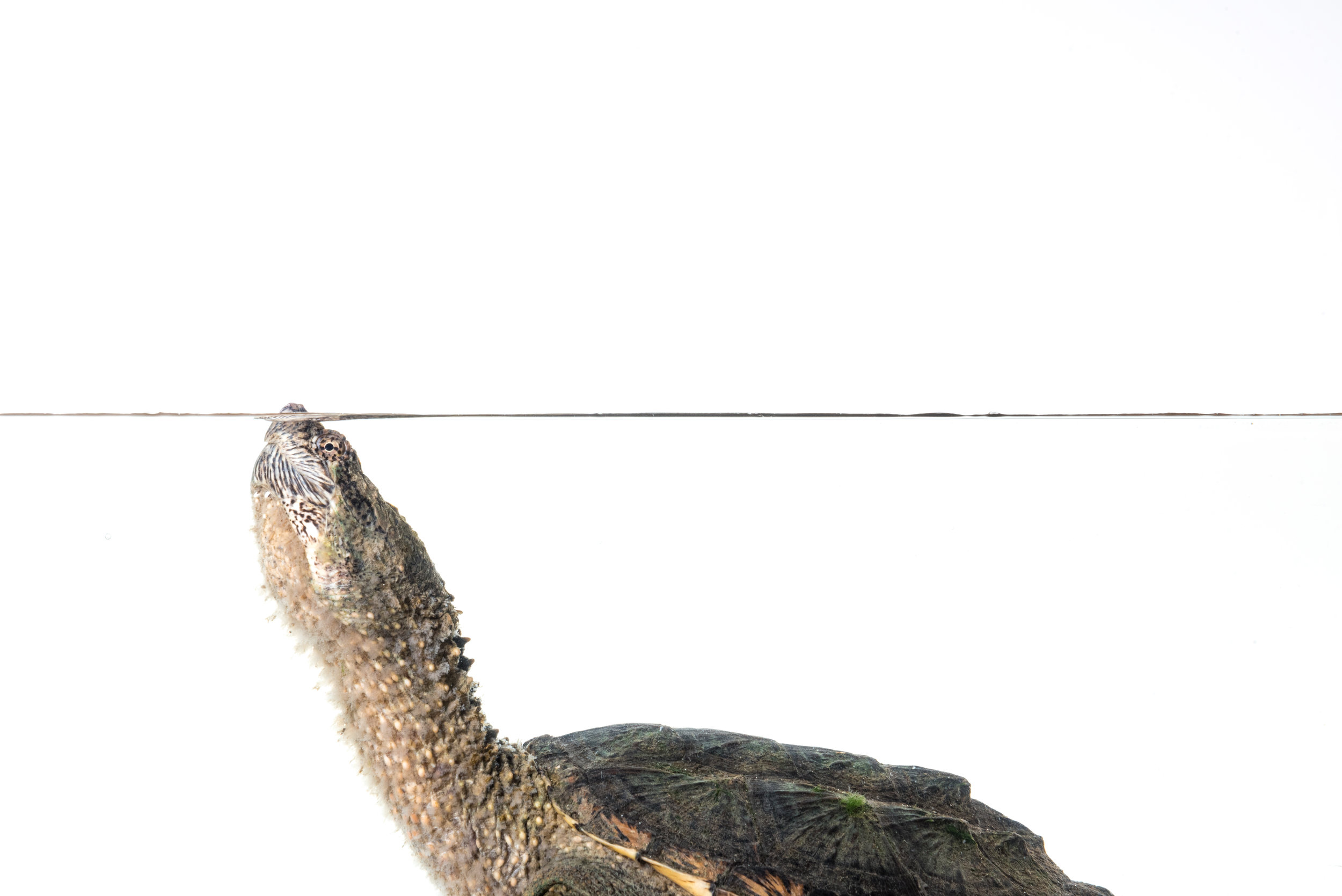
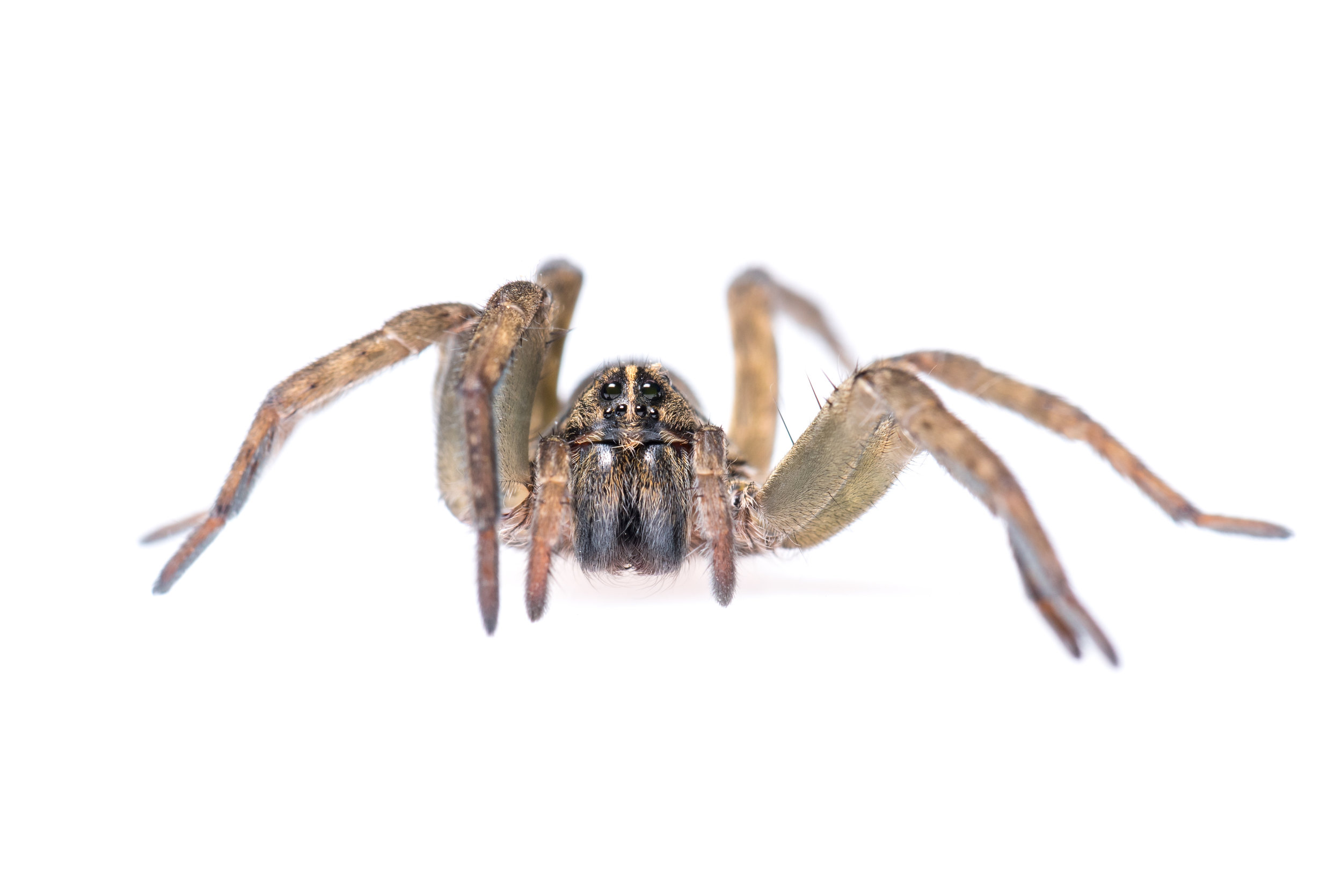
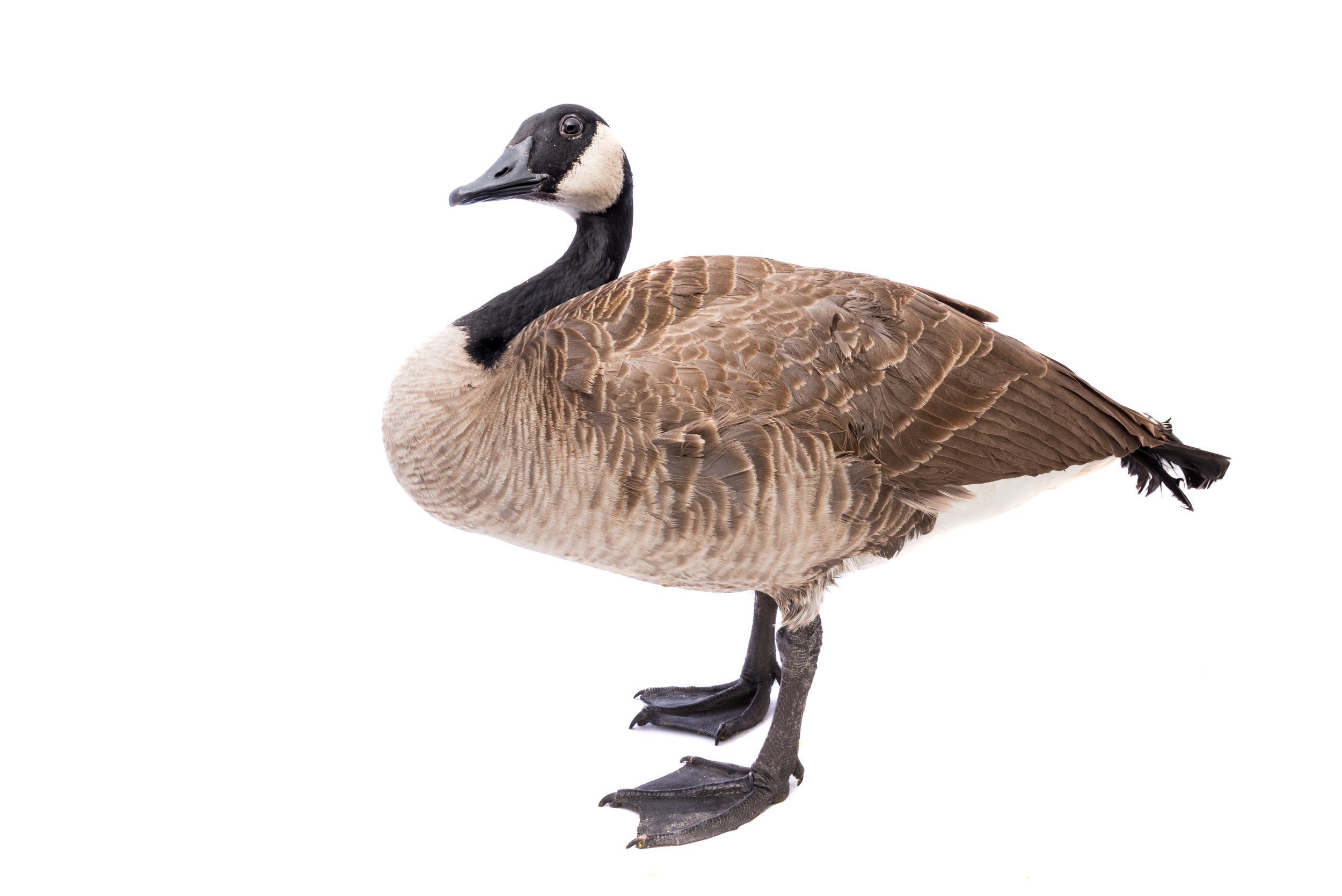
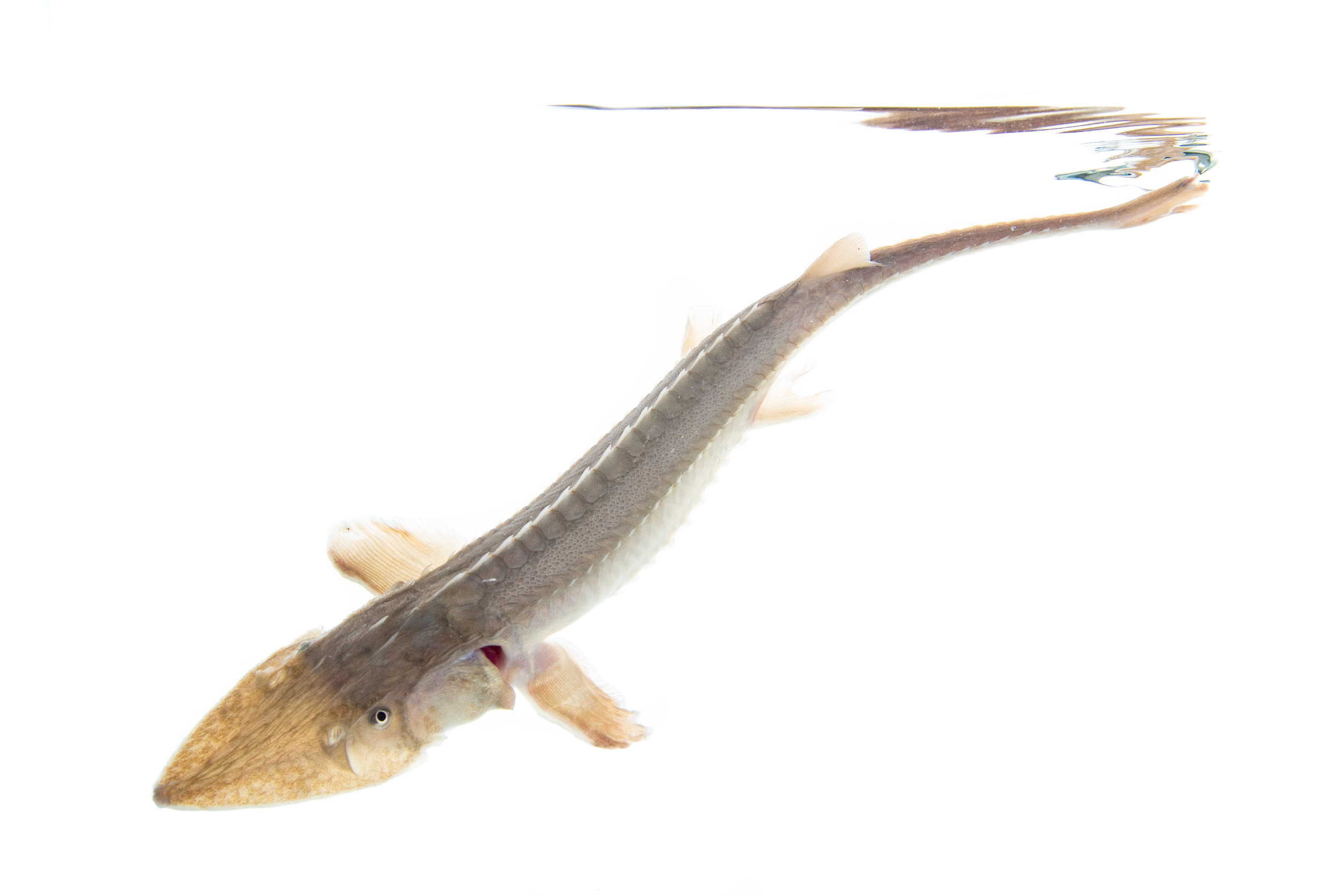
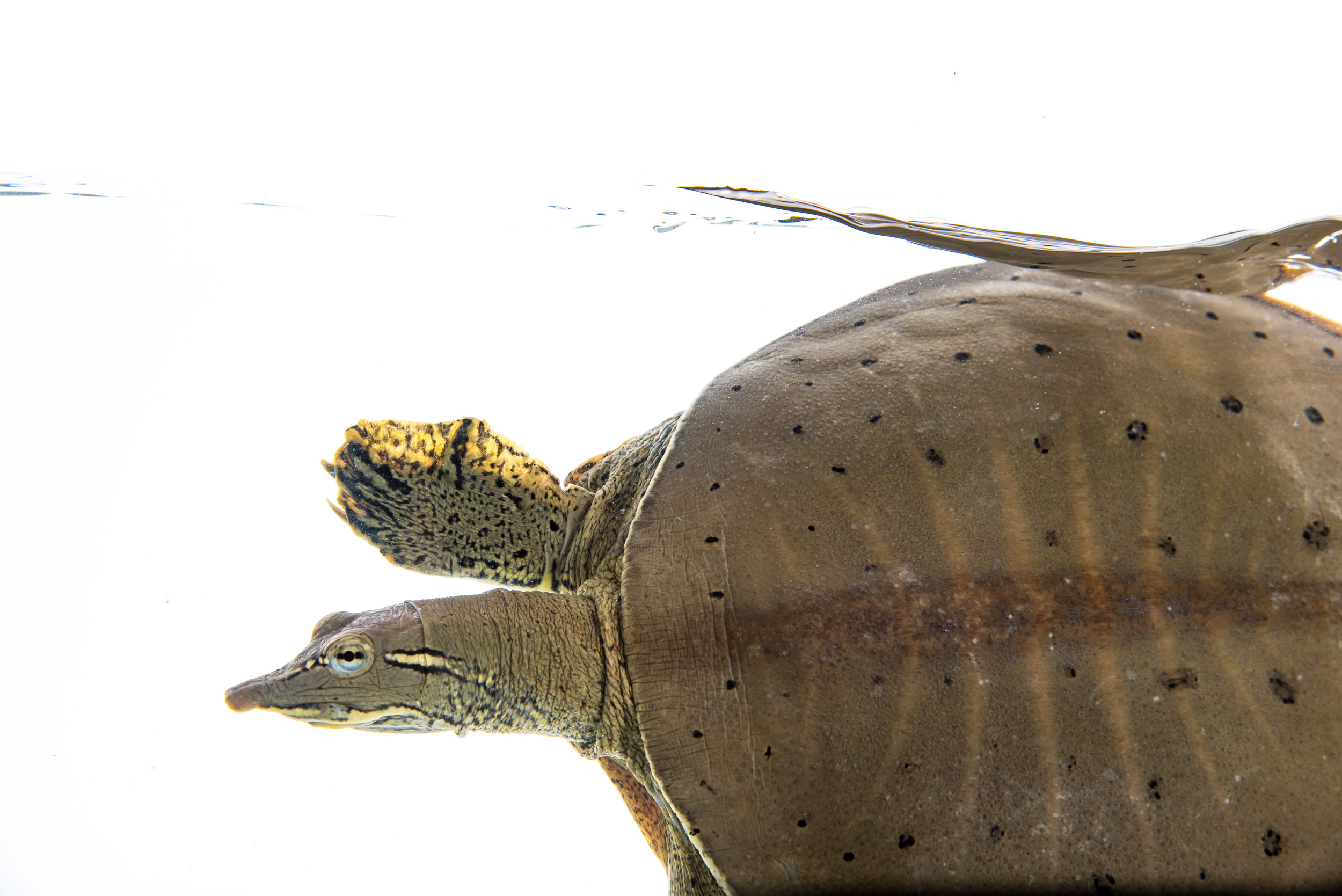
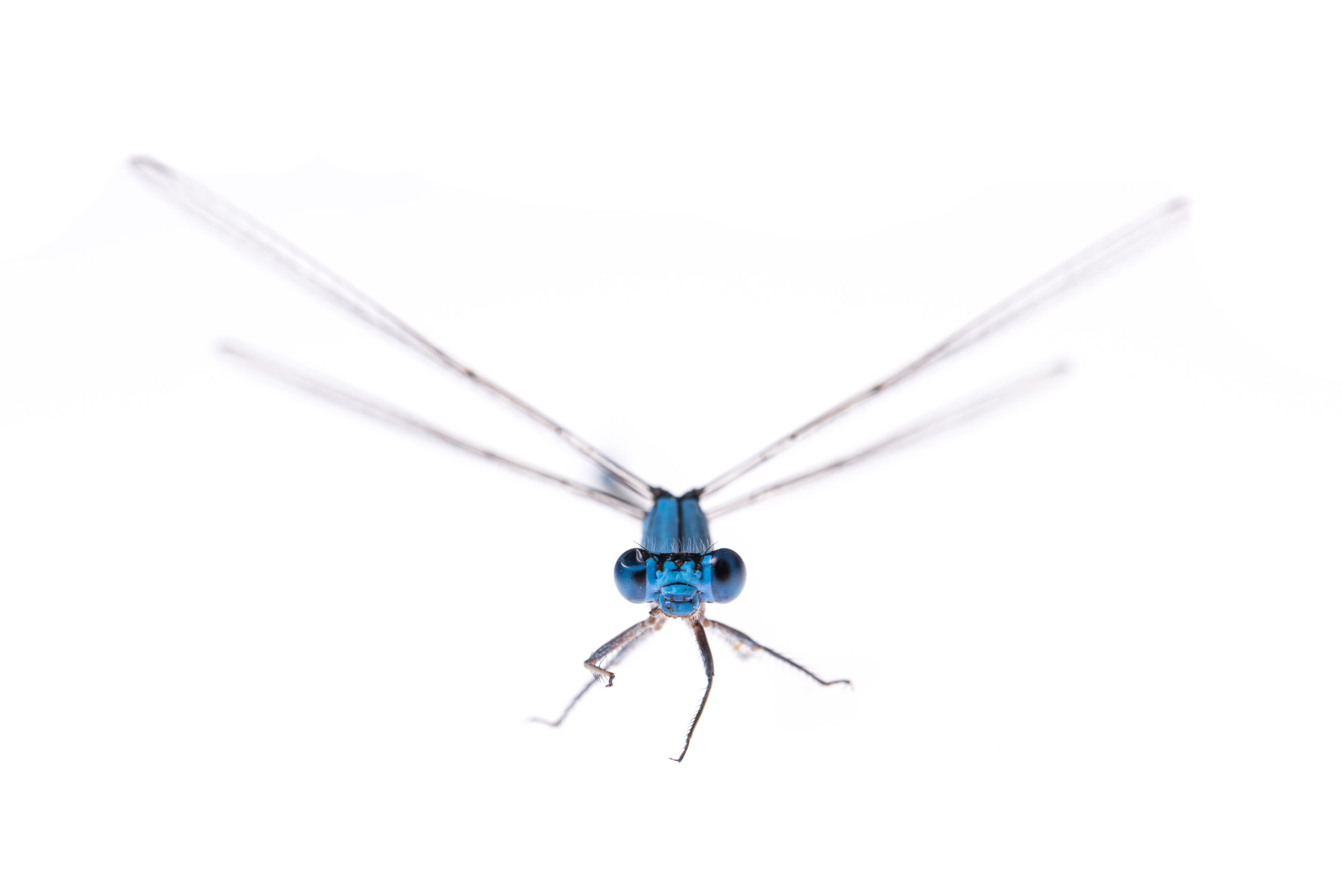
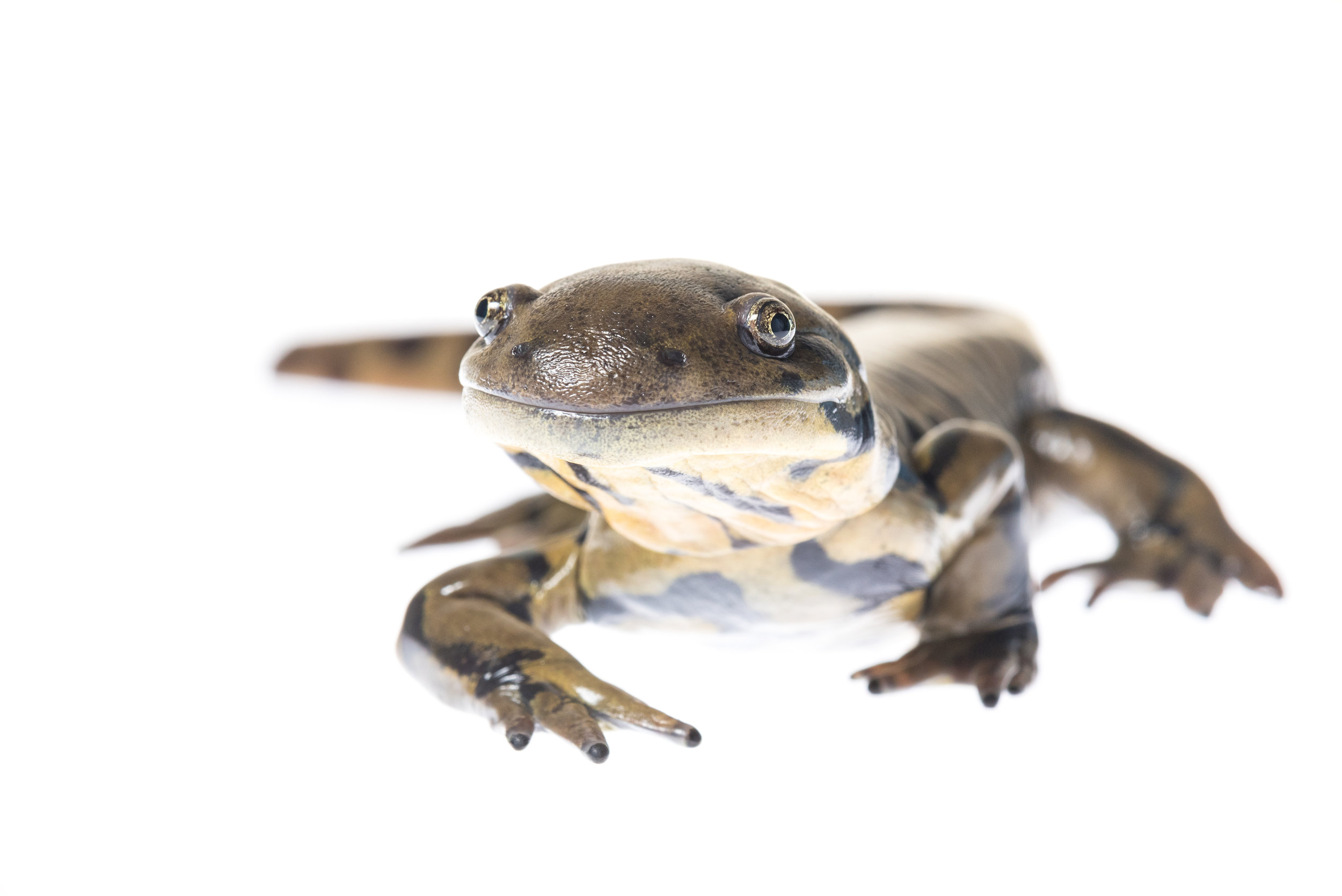
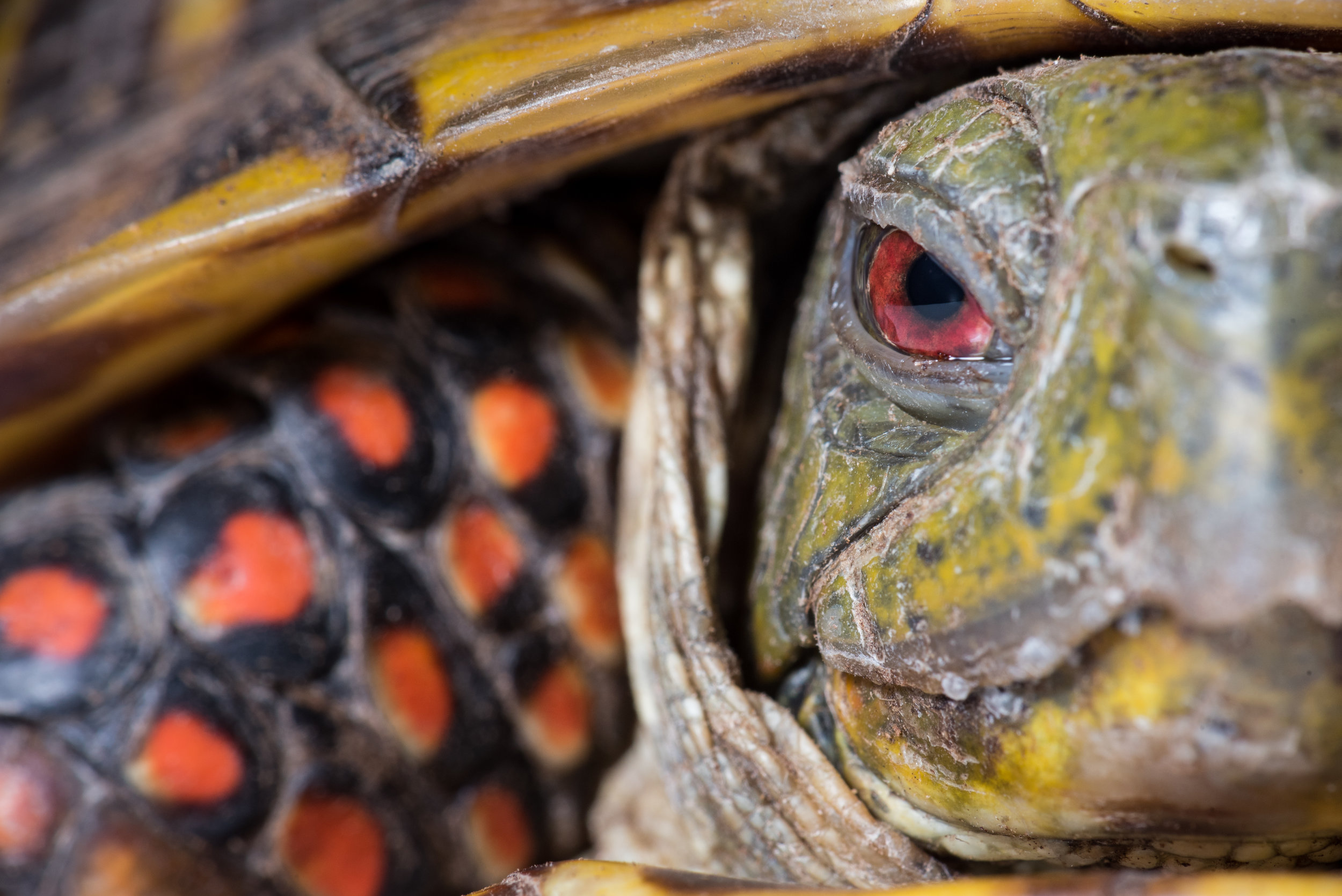
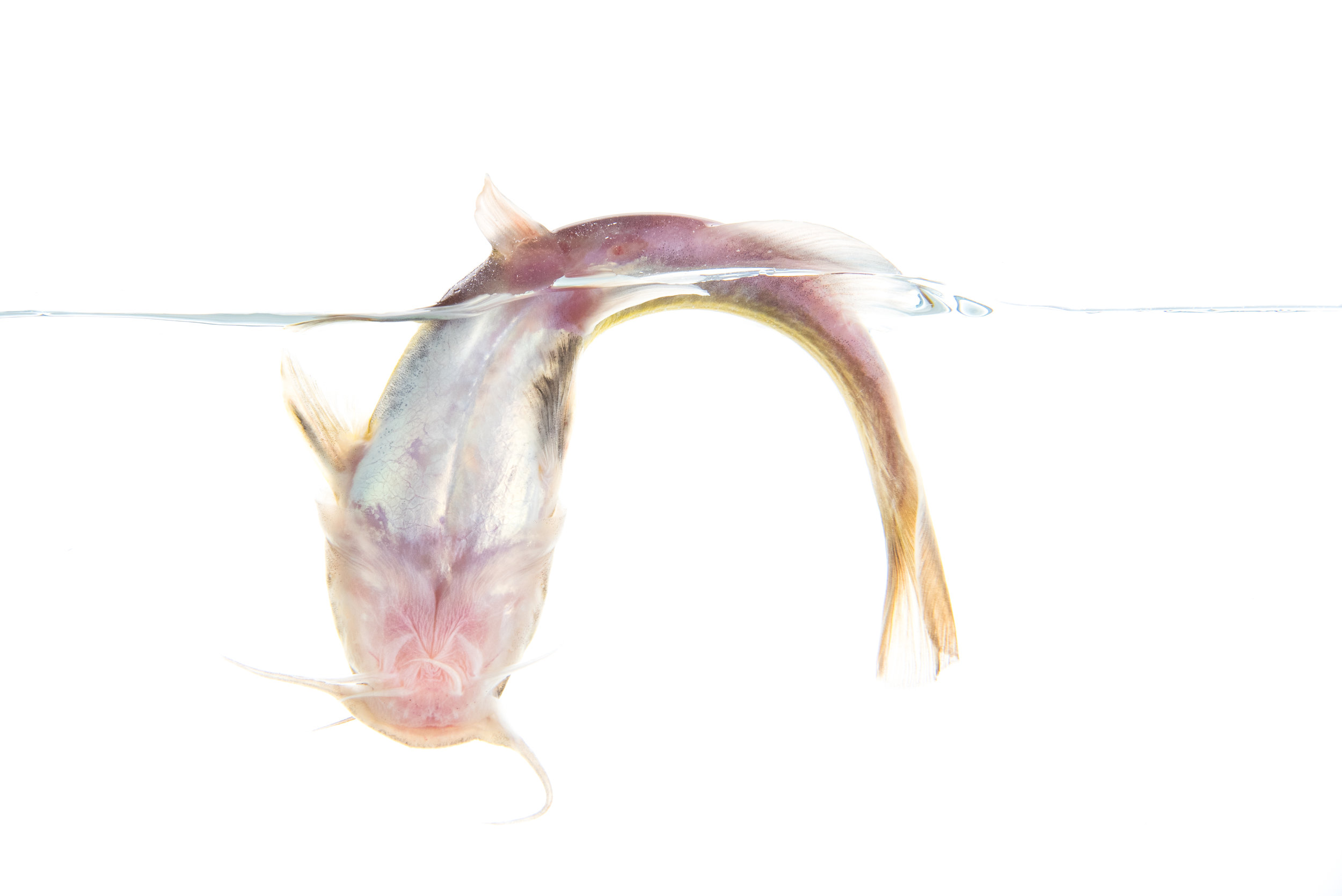
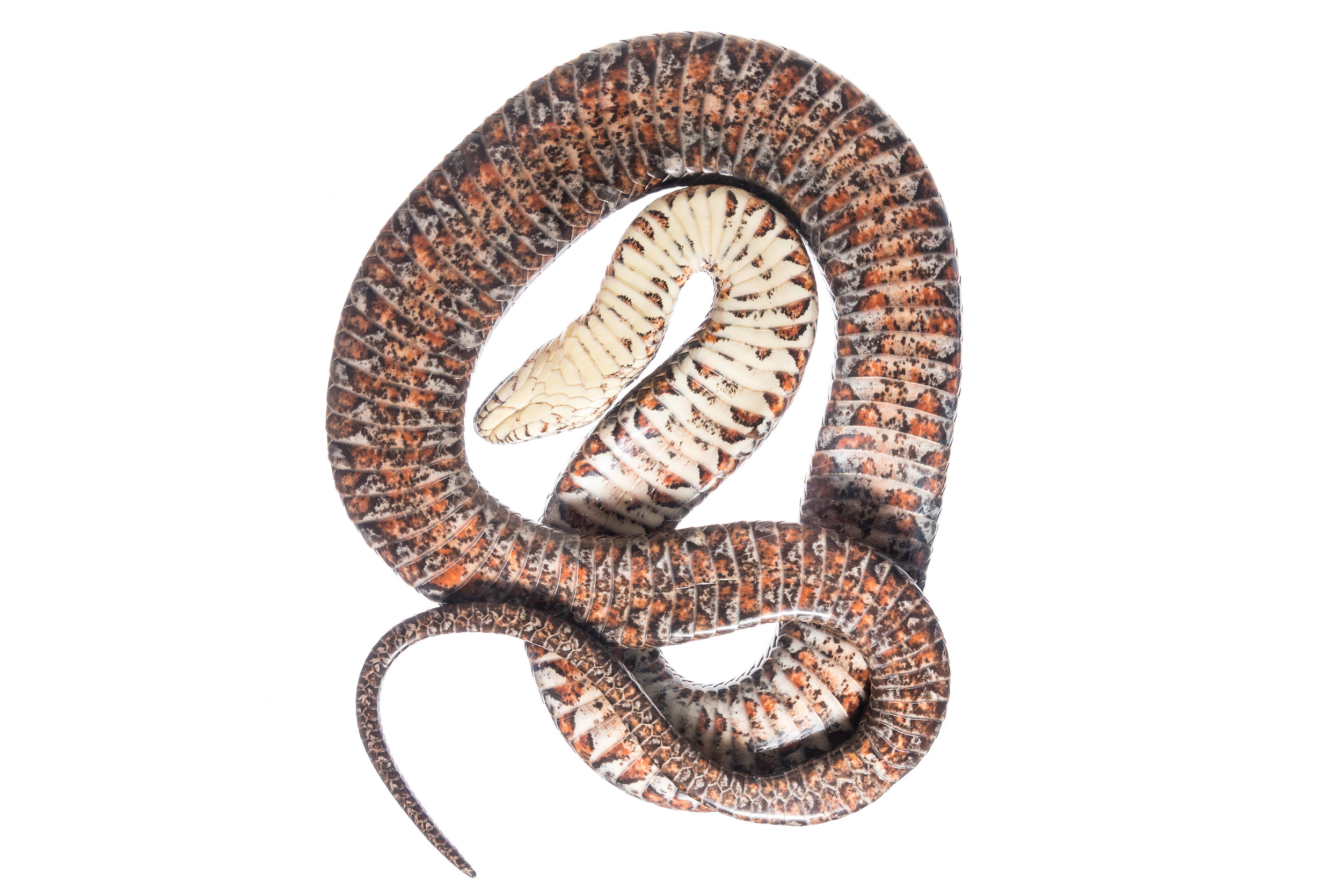
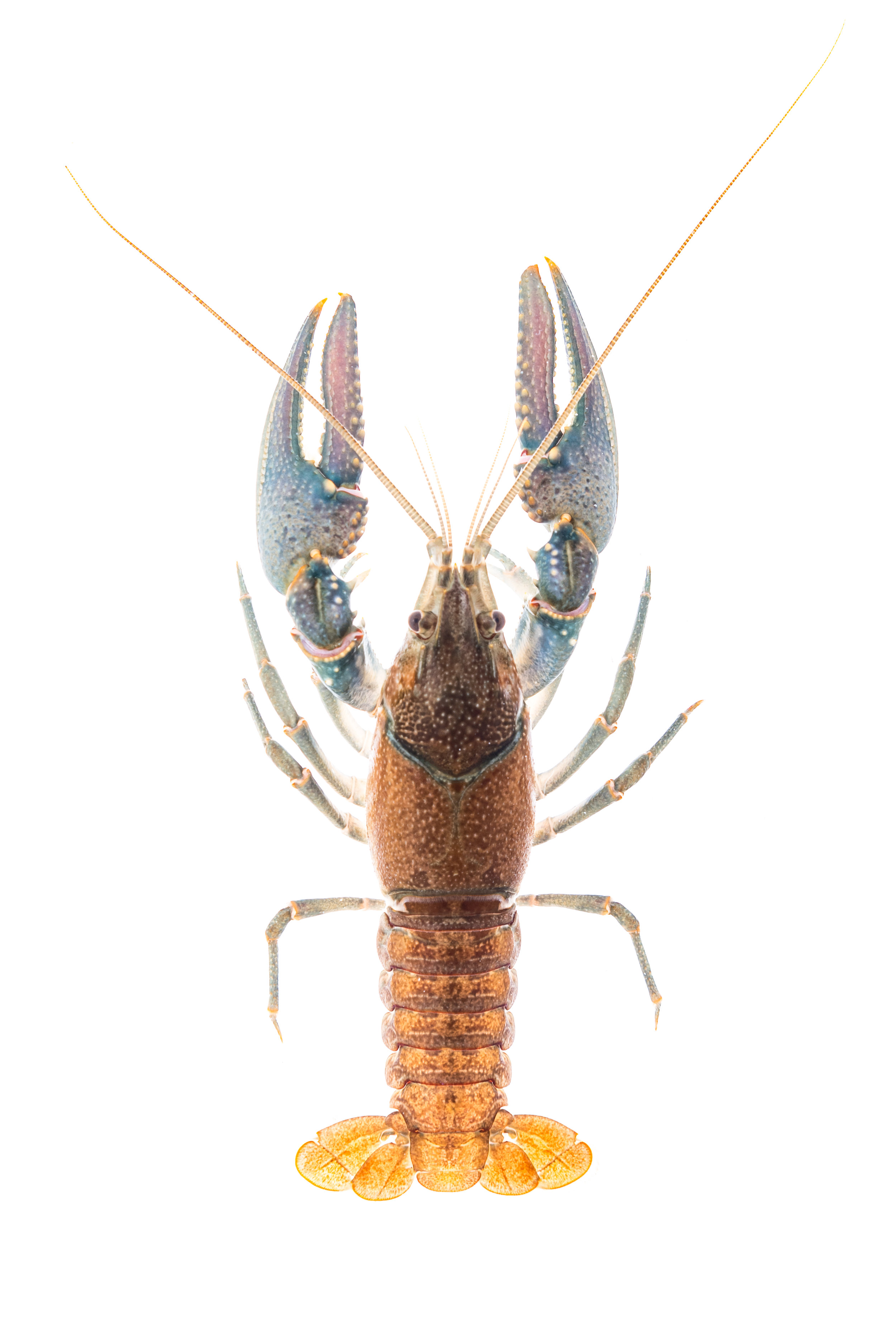
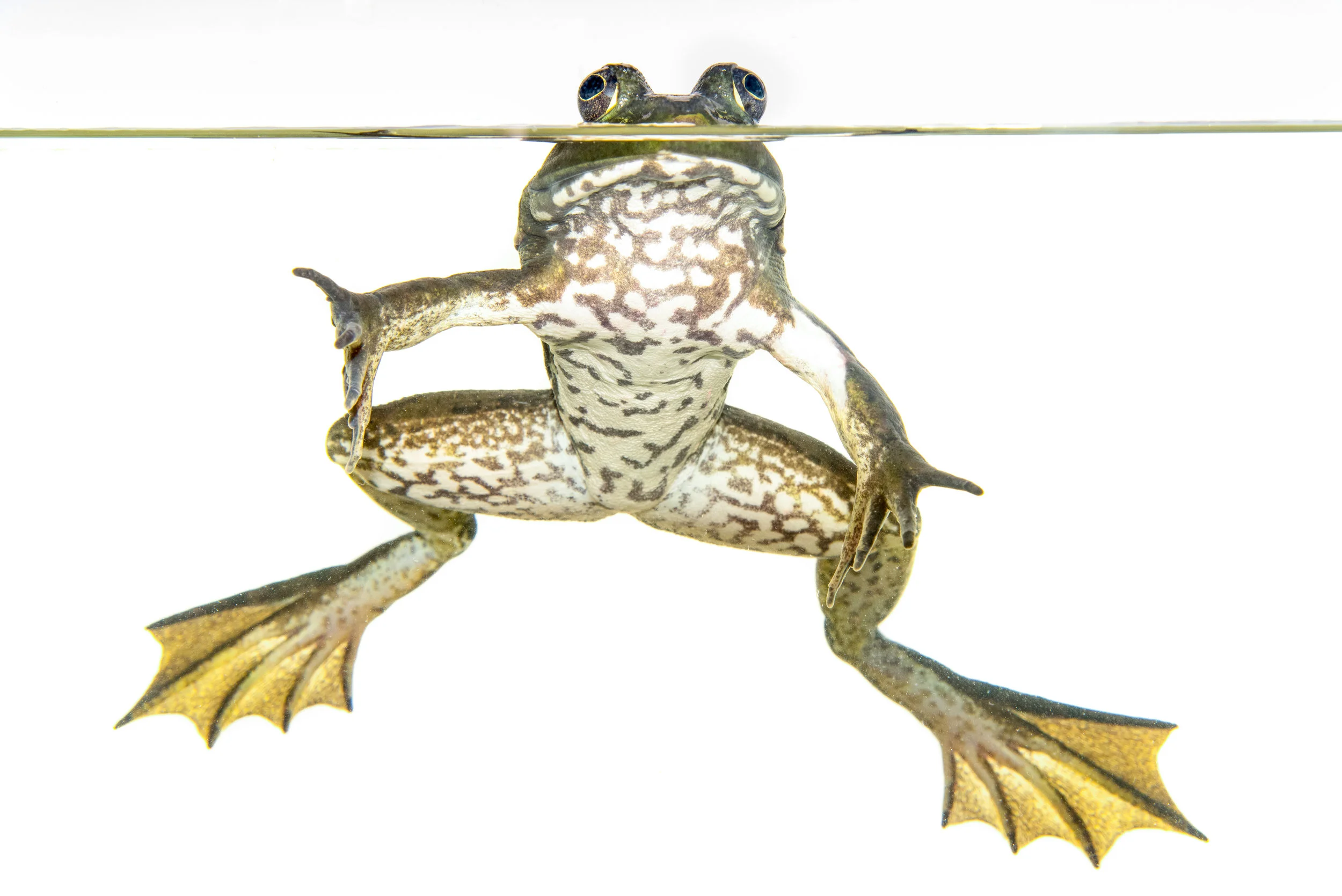
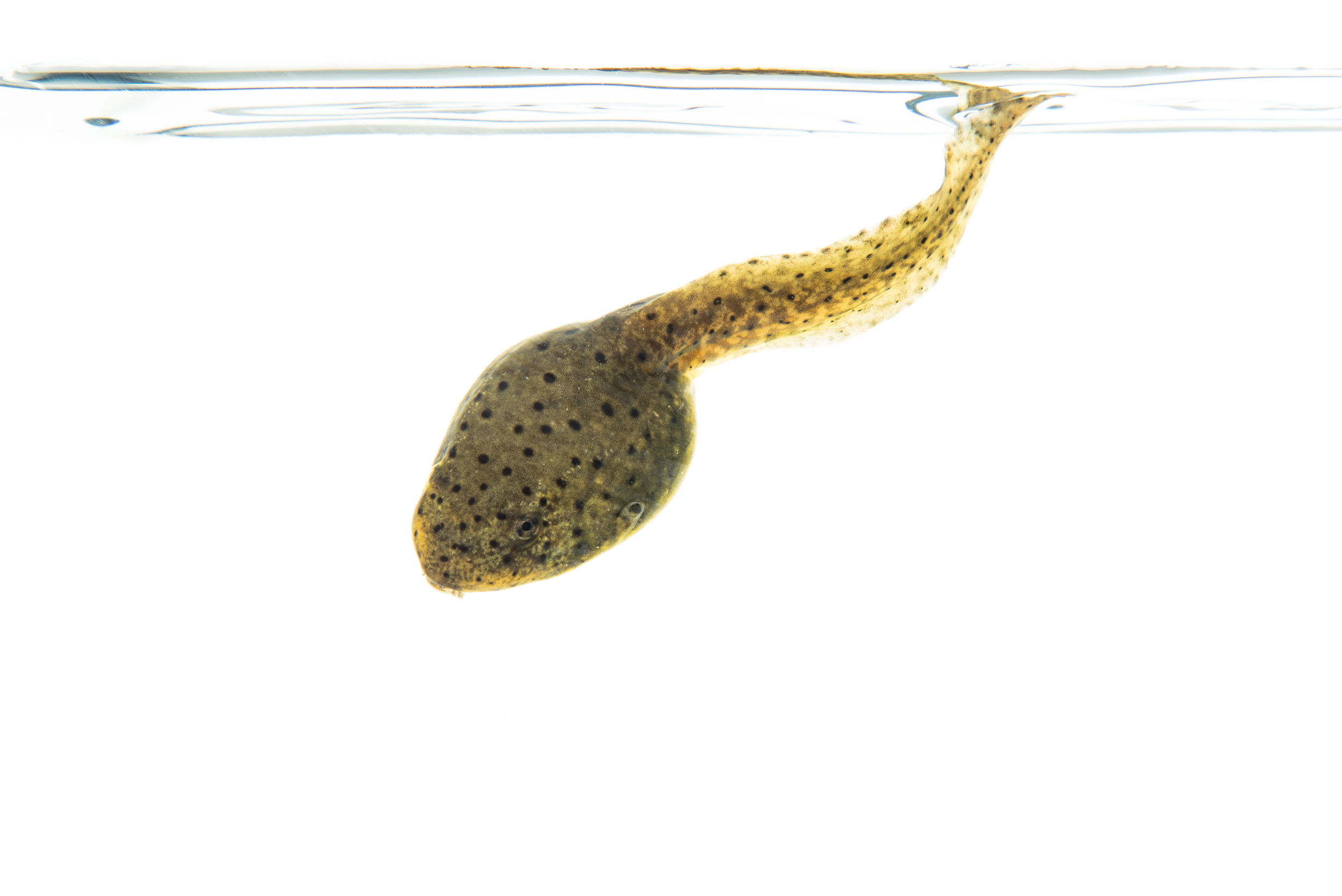
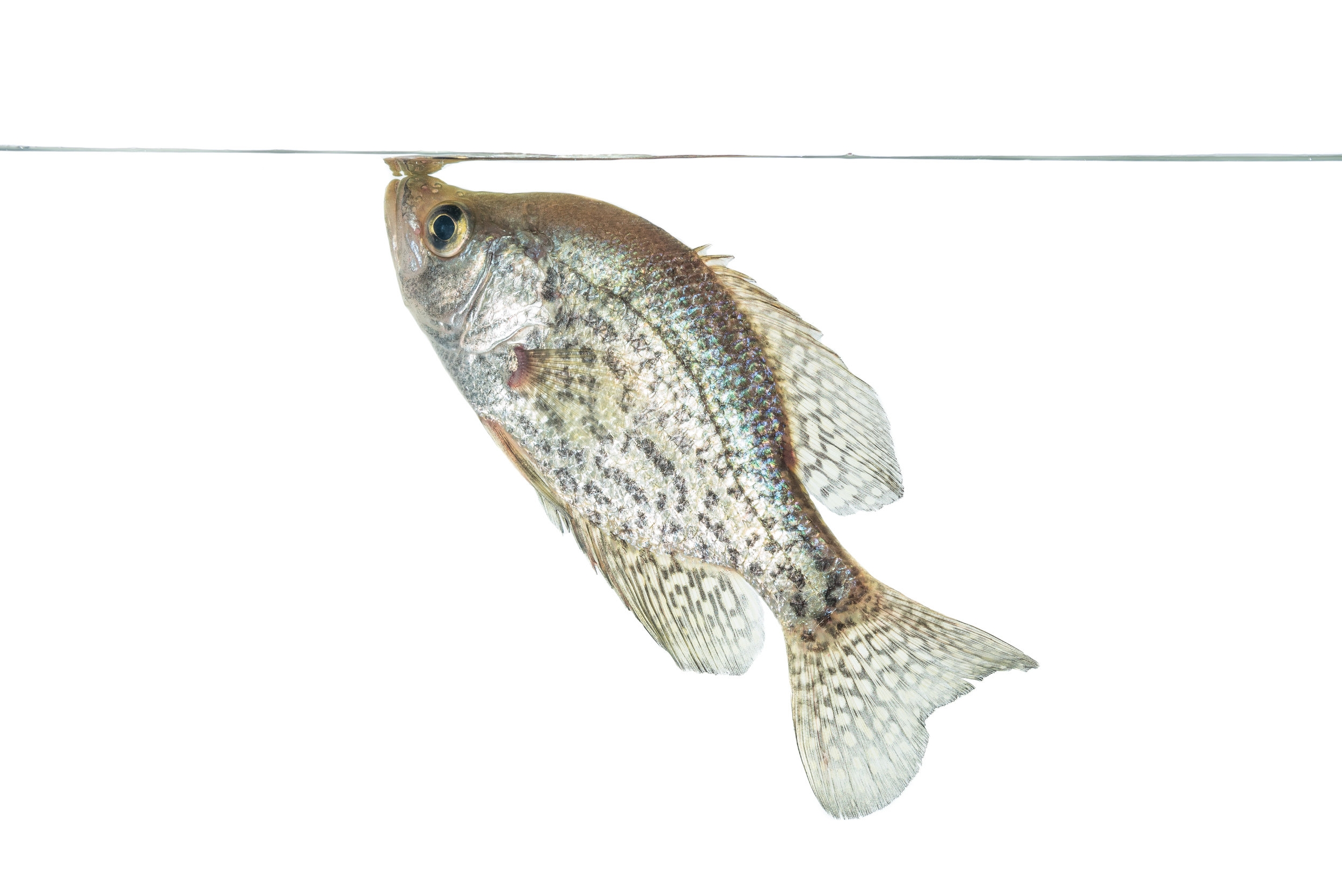
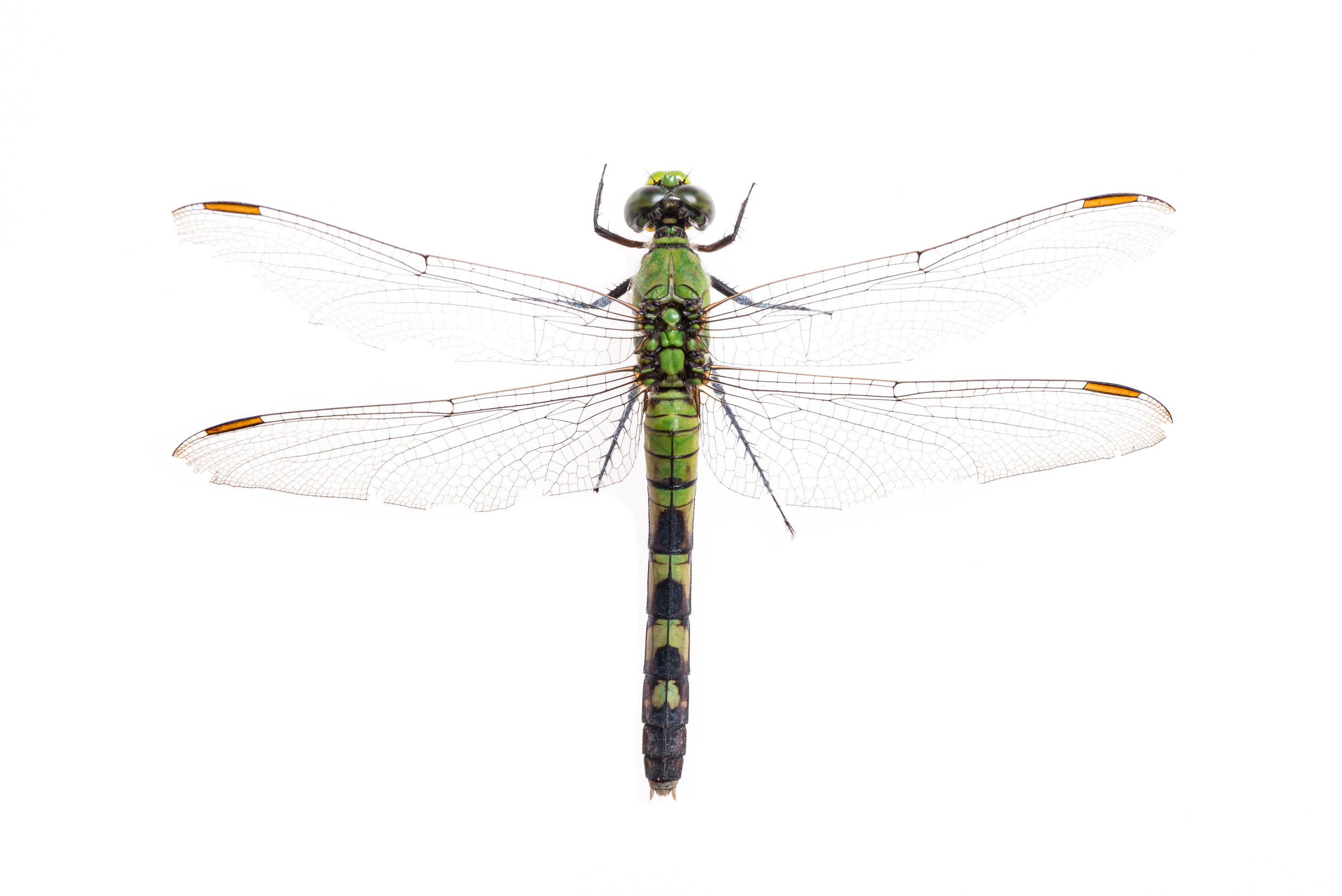
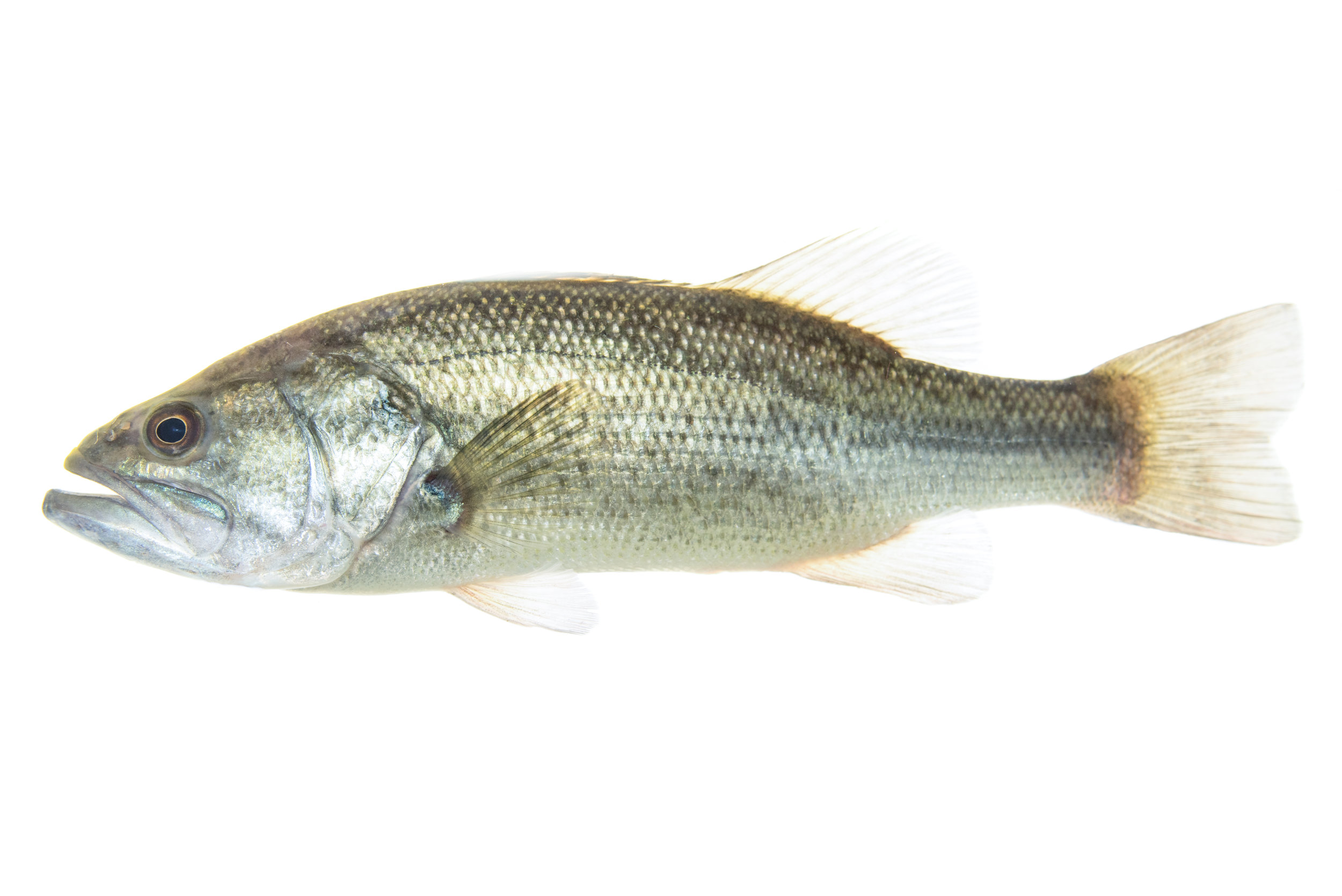
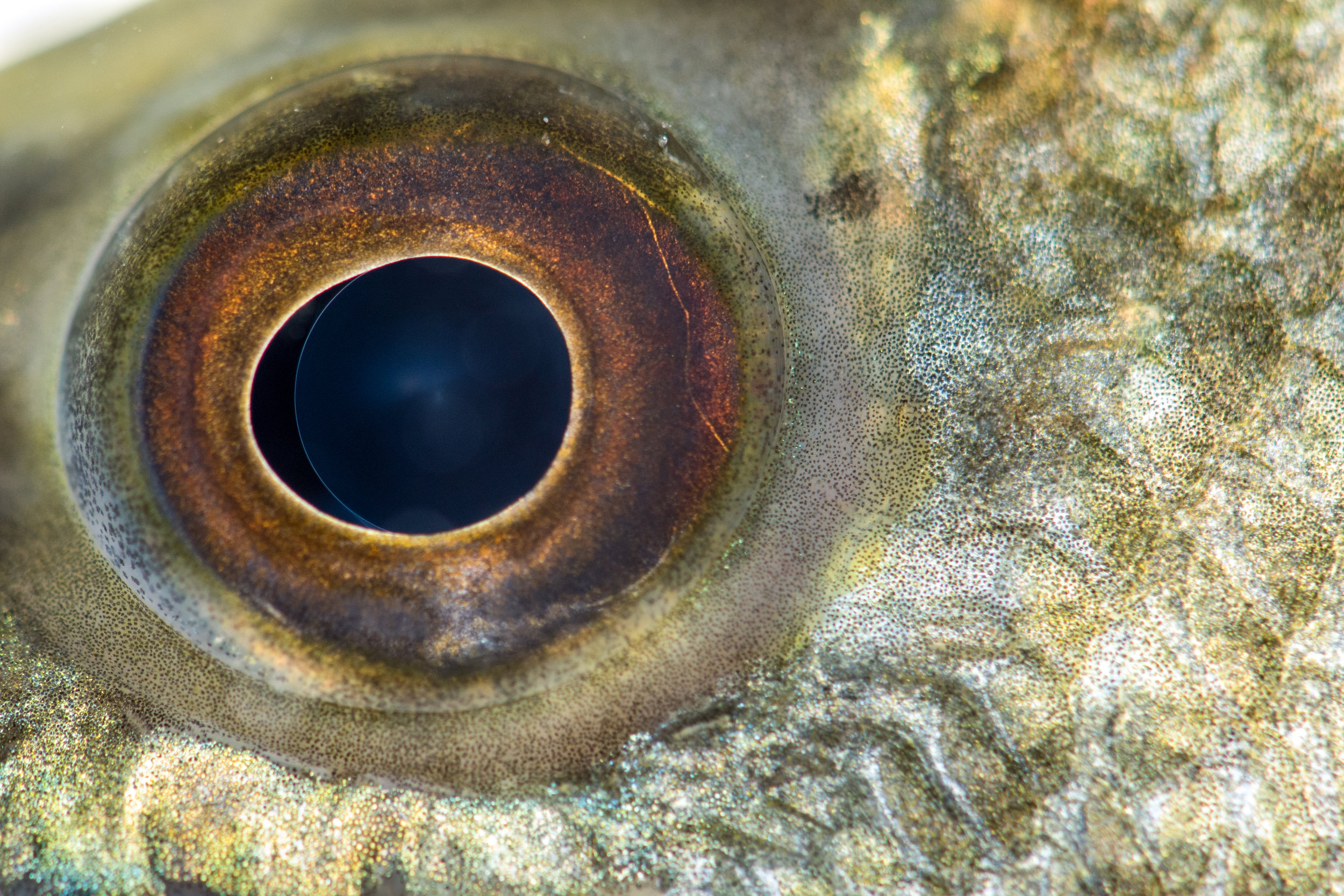
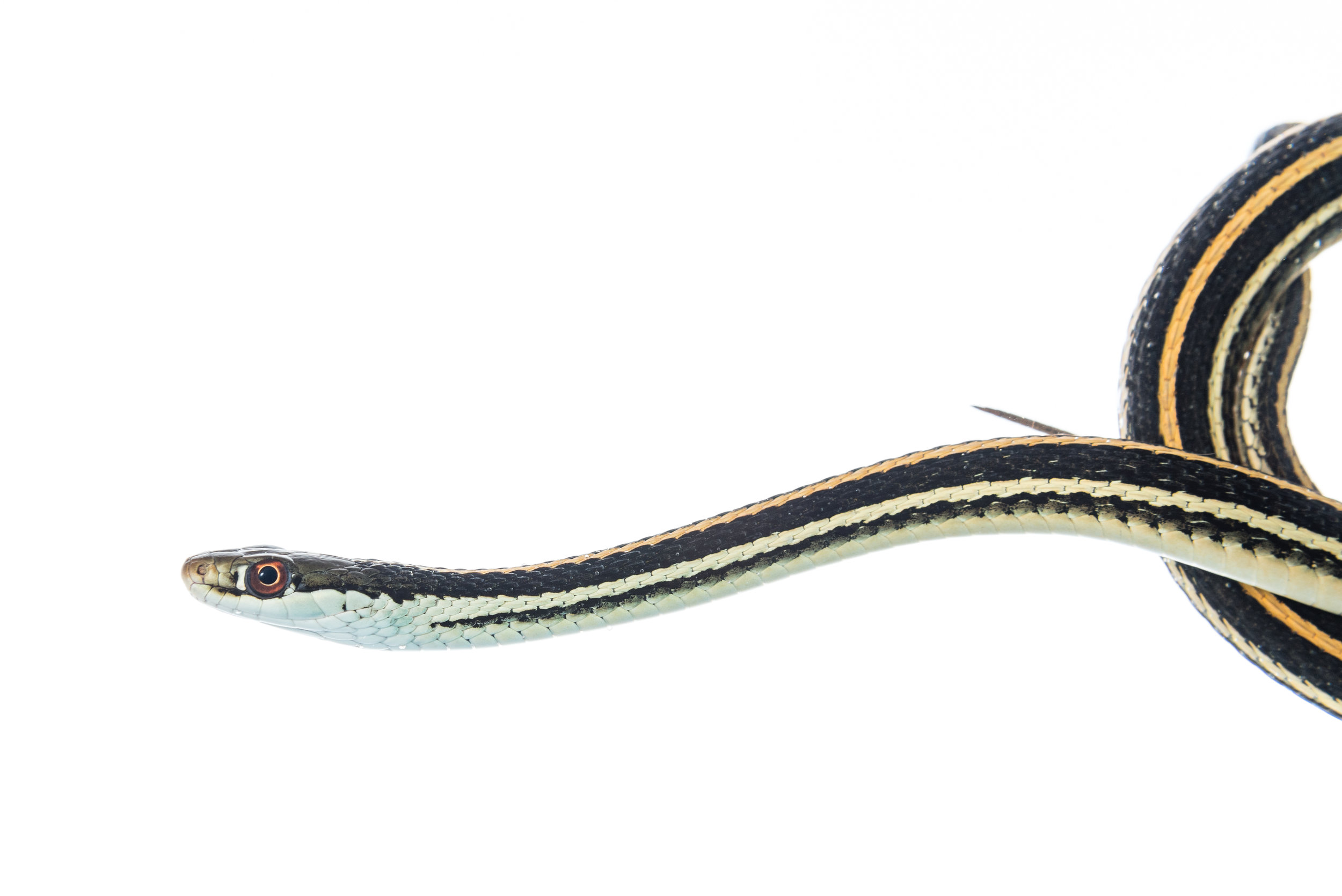
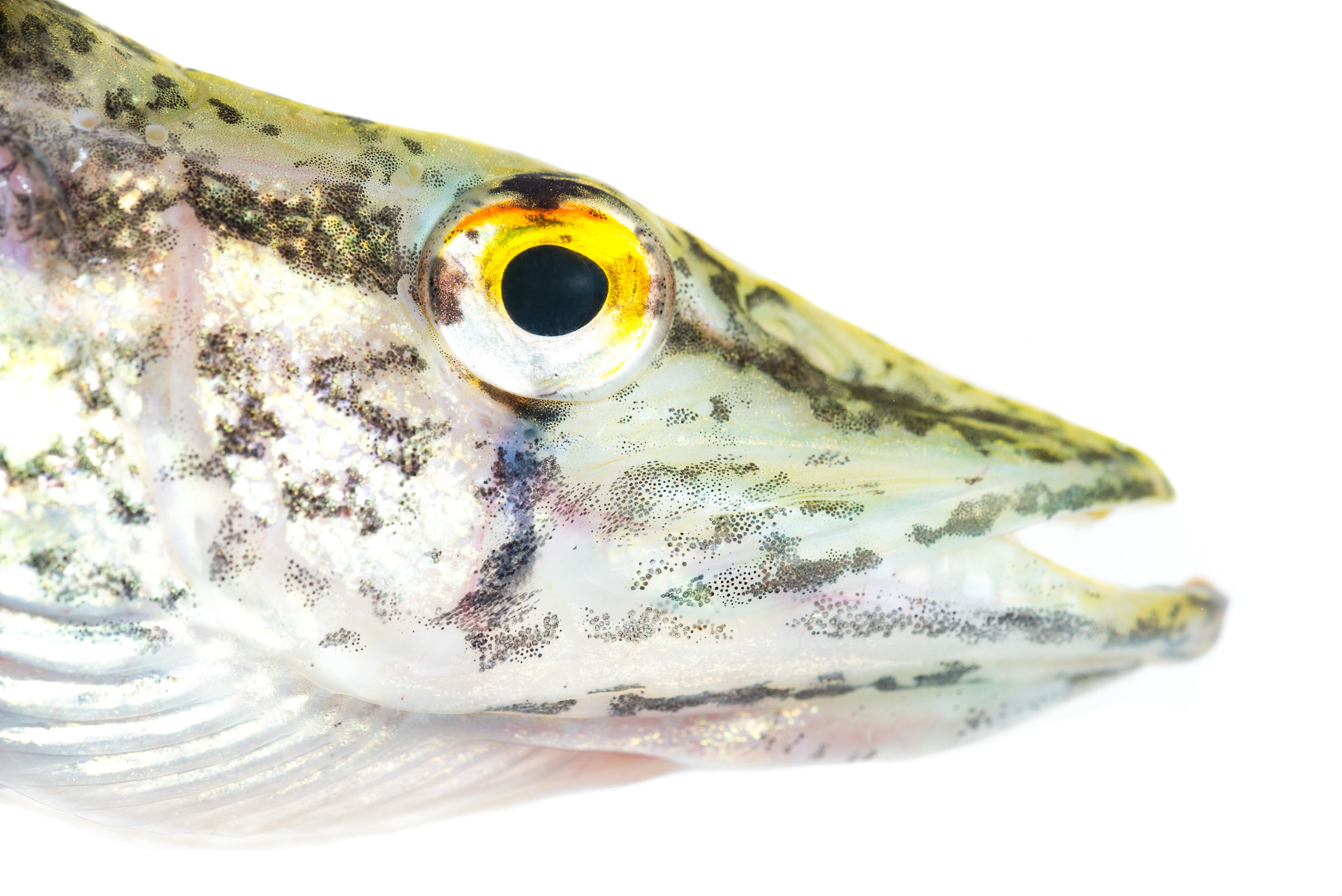
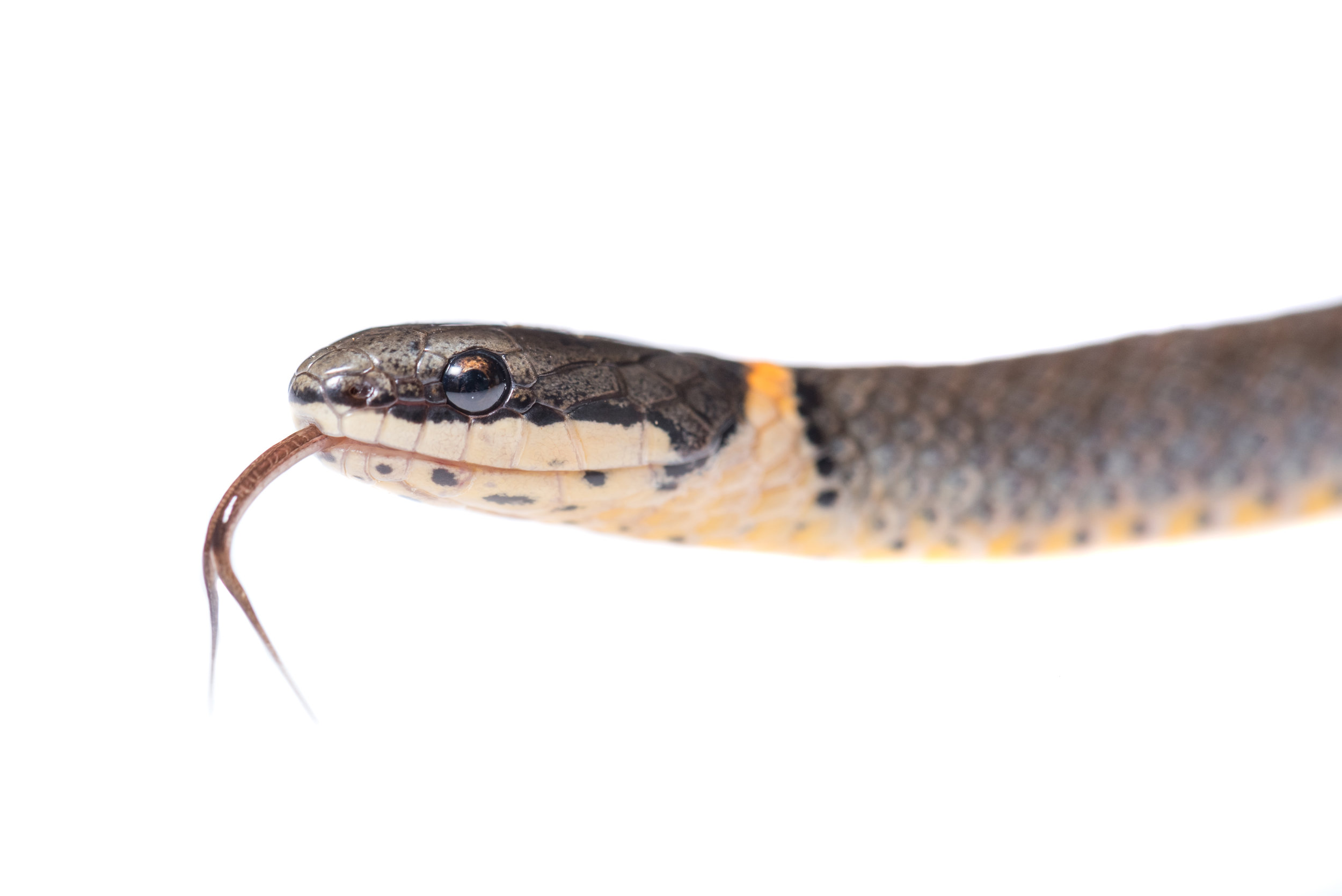
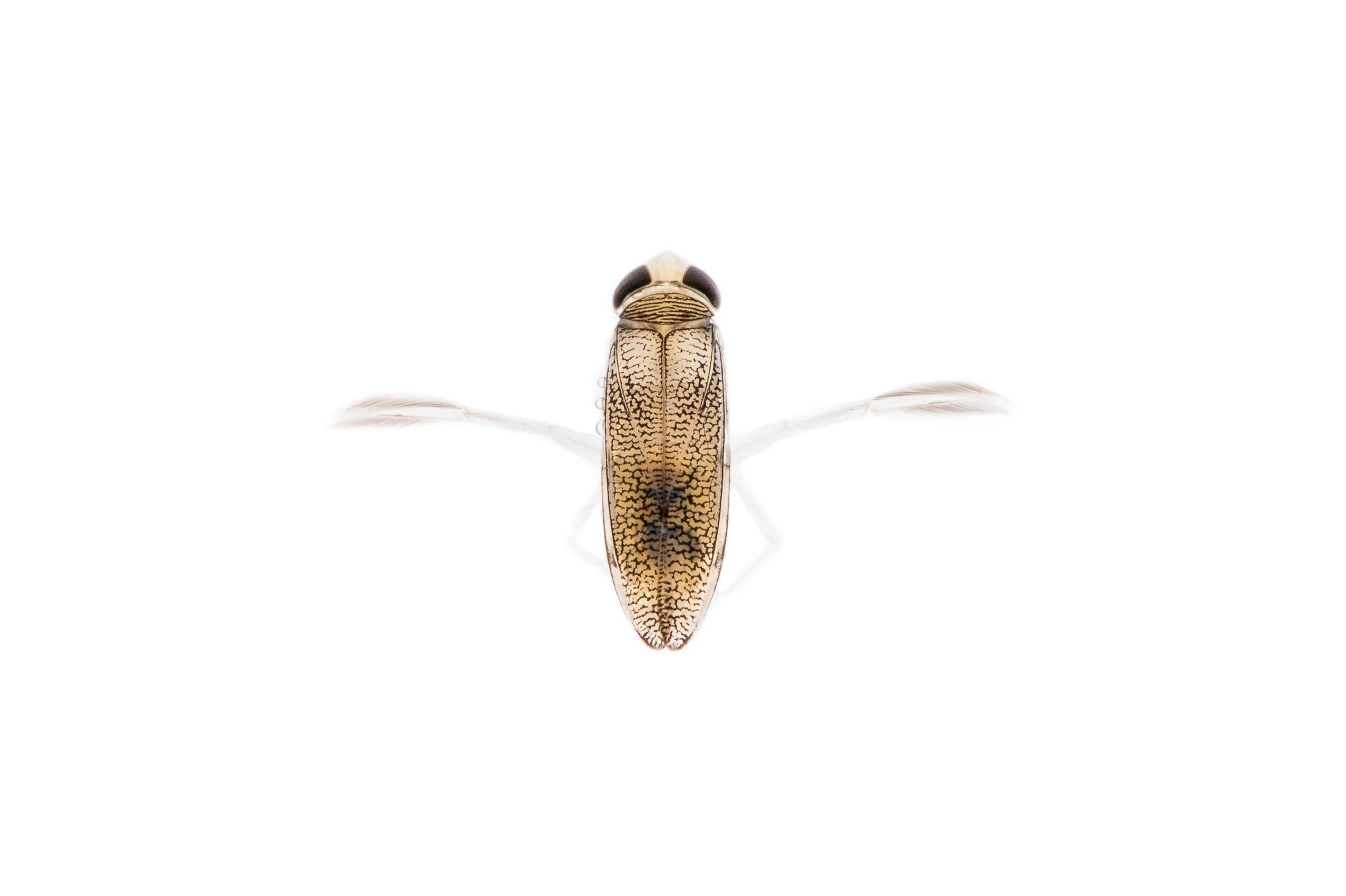
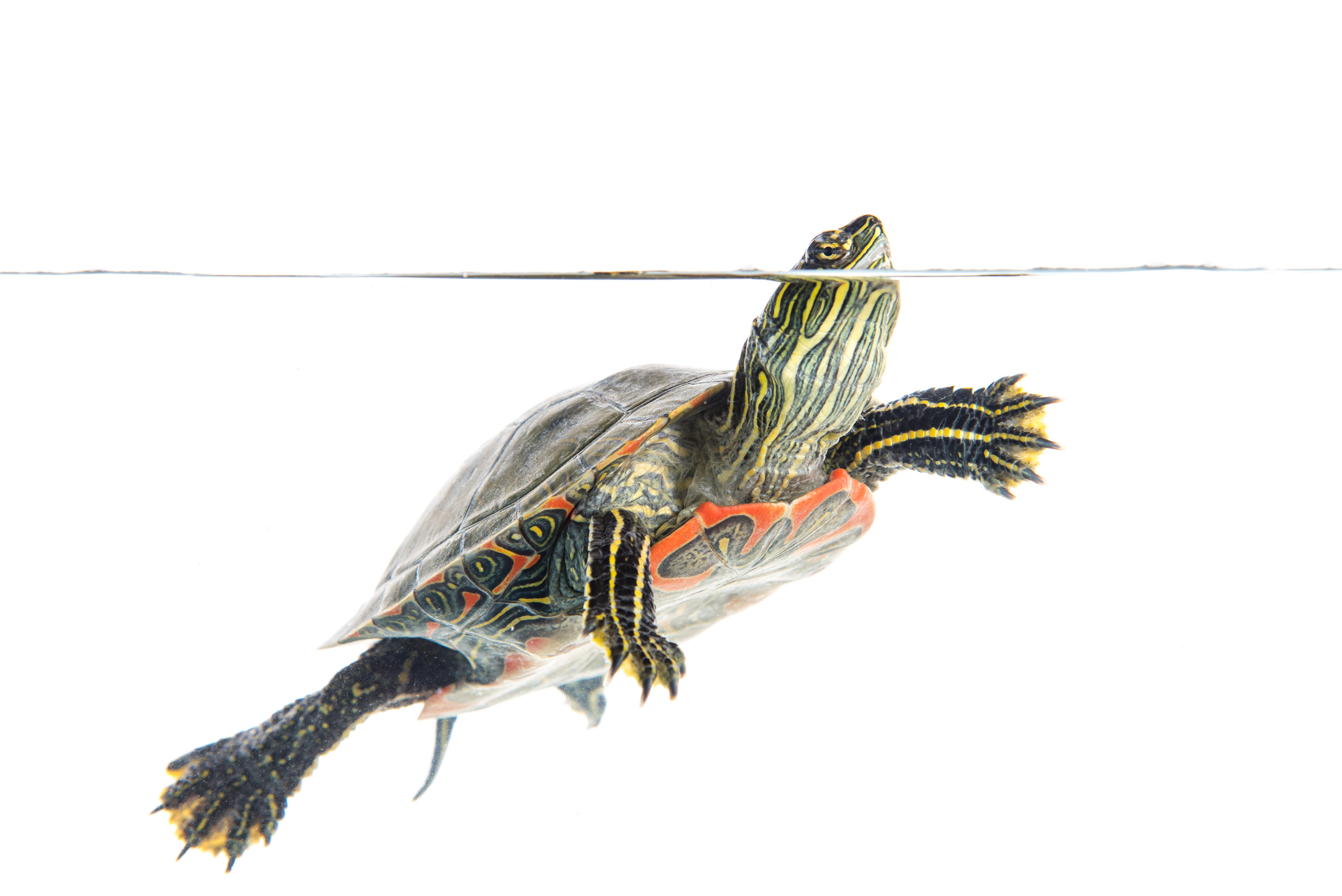
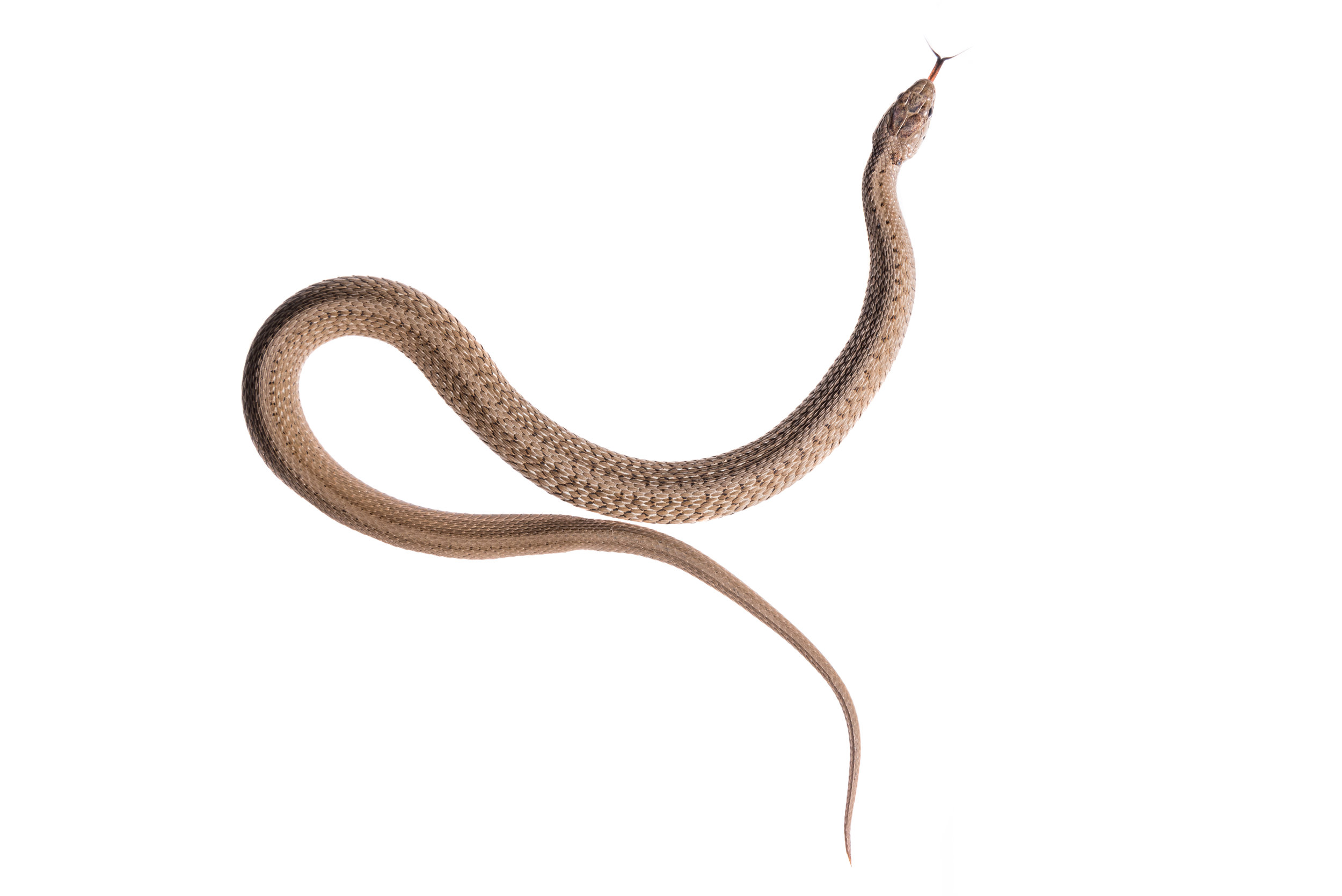
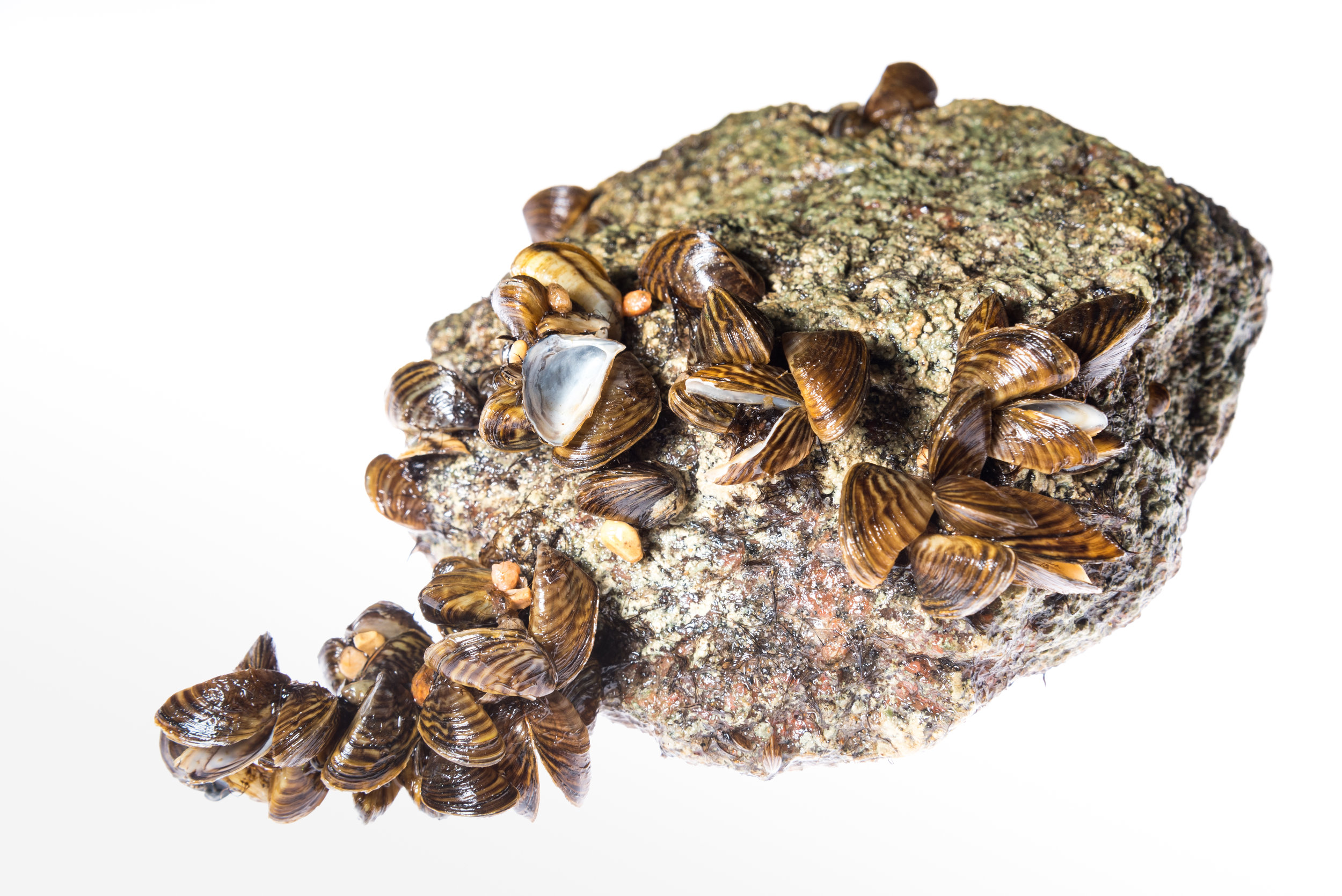
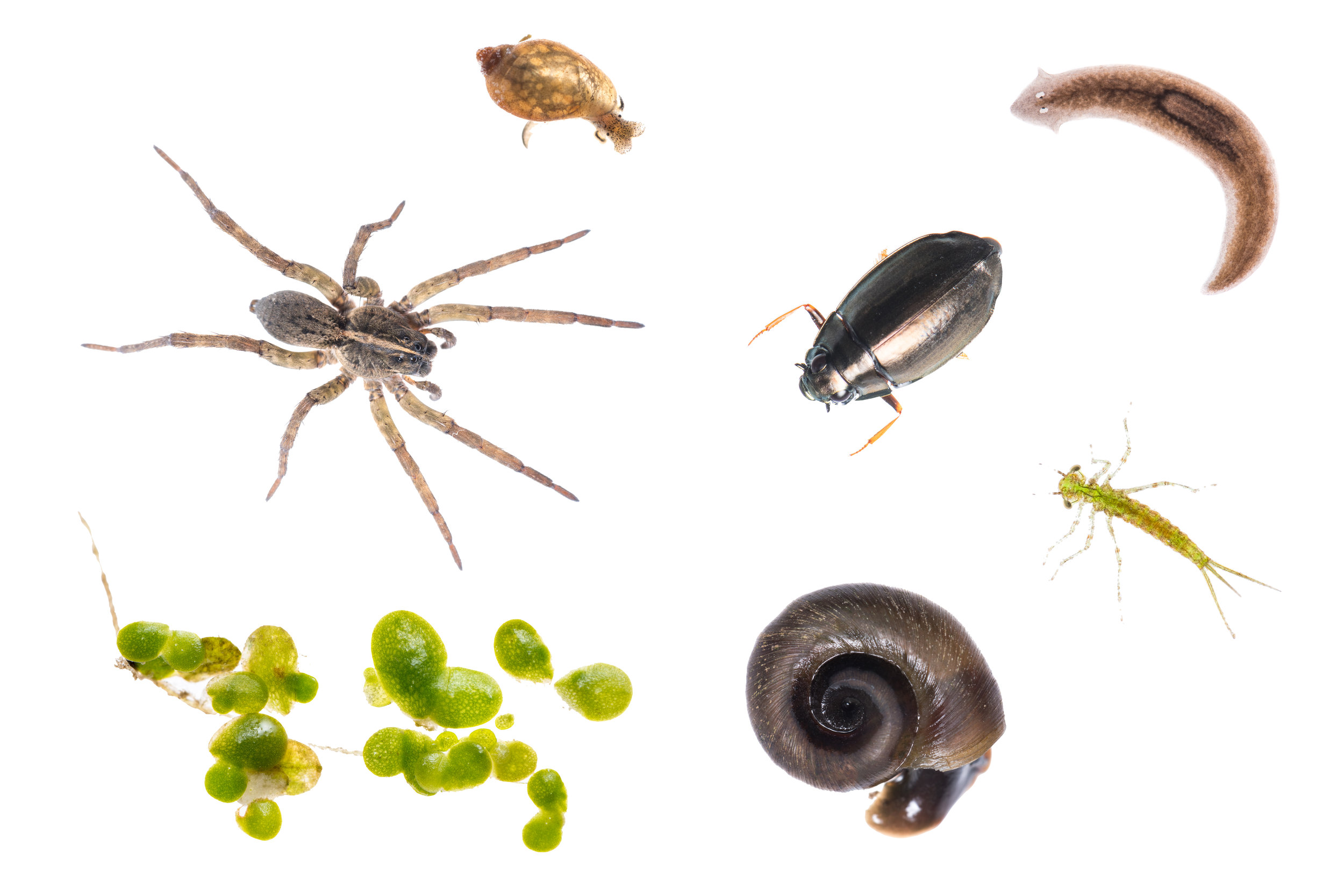

The American paddlefish is a very primitive species of basal ray-finned fish that is closely related to sturgeon. The long "paddle," or rostrum, is covered with thousands of tiny sensory organs that help detect the tiny zooplankton that they feed upon. A large mouth and gill rakers act as a comb as they swim, helping to filter the zooplankton out of the water.
Paddlefish populations have declined greatly over the past several decades, primarily due to habitat degradation and overfishing. By building dams and channelizing rivers, we have effectively cut them off from their suitable spawning areas.

Prefers to live in large streams along the Missouri and Mississippi Rivers, where it will emerge for hours per day to bask in the sun. They are strong swimmers, allowing them to live in moderately strong currents with plenty of vegetation and snags to hide in.
False map turtles are fairly social animals and are comfortable living communally around other turtles, which can help them avoid predators. As with most turtles, their nests are vulnerable to destruction by other animals and they are negatively impacted by habitat destruction.

Gar are the ultimate floodplain fish, with a sleek shape conducive to gliding through grass and other vegetation. As ambush predators, they will hide and wait for other fish, crustaceans, and invertebrates to approach them before catching them in their long jaws.
Shortnose gar have a specialized gas bladder with a purpose similar to our lungs. This allows them to survive in poor water conditions with little oxygenation by gulping air from the surface. They are reliant on areas of slow current with plenty of vegetation to breed in, making them inseparably tied to floodplains.

Living in fast-flowing rivers of the central and south-central United States, smooth softshell turtles prefer areas with sand banks and muddy substrate. Their extremely long necks allow them bury themselves and reach the surface with their snorkel-like nose.
During winter months, they will hibernate underwater, buried under sand or mud for months. Their namesake soft shell is thin and somewhat permeable, allowing for slightly more oxygen exchange when submerged. Unfortunately, this permeable shell also makes them more susceptible to pollution and water quality issues.

These highly aquatic snakes can be found in close proximity to waterways throughout most of North America. They are commonly seen basking in the sun along the edge of water or swimming in search of food.
They are not dangerous to humans and their diet consists primarily of fish, amphibians, worms, and slugs. Garter snakes give live birth to high numbers of offspring to ensure that some of them survive, making them fairly abundant.

Mink are a perfect example of a mammal that has adapted to live on a floodplain. Their semi-aquatic lifestyle means that they can capitalize on the abundant food sources in waterways such as fish and crustaceans, as well as prey on rodents and other terrestrial animals. Mink are just one of the many amazing organisms that help connect the land and water through the constant fluctuations of these highly biodiverse ecosystems.
Historically, wild mink were trapped in large numbers for their fur, a practice which has since been mostly replaced with mink farm operations.

Endemic to the Missouri and lower Mississippi River basins, pallid sturgeon are a species of ray-finned fish that has changed very little over the past 70 million years. They were officially listed as an endangered species by the U.S. Fish and Wildlife Service on September 9th, 1990.

Historically, pallid sturgeon would travel hundreds of miles upriver in order to spawn, but their number have declined greatly due to changes made to the Missouri River such as channelization and dam construction.

Turkey vultures act as nature’s cleanup crew, getting rid of carrion that may cause disease.

Being highly adaptable has led to bluegill inhabiting a variety of ecosystems throughout the North America. They are a member of the sunfish family and can usually be found in streams, rivers, lakes, and ponds with vegetation or snags to hide in.

As common as they may be, bluegill are critical components of many aquatic ecosystems in North America. Not only can they consume vast quantities of invertebrates, they also serve as a plentiful food source for larger predators.

Being the largest turtle throughout the Missouri River basin, snapping turtles have a wide variety of food choices available to them and can grow to shell lengths of almost 20 inches. They inhabit permanent bodies of water and can occasionally be found crossing over land to lay eggs or travel between waterways.

Snapping turtle eggs are commonly eaten by other animals, so they rely on high numbers (upwards of 80 per clutch) to ensure the survival of some offspring. Other than humans, they have very few predators when they have reached maturity.

Wolf spiders are solitary, agile hunters, pouncing on prey that comes close or even chasing it down. All species of wolf spider have eight eyes: a line of four small eyes on bottom, two large eyes above them, and 2 eyes on top of their head.
Unlike many spiders, wolf spiders do not spin web. The female will carry their young, once they have hatched, on her back until they are able to fend for themselves. They are mildly venomous, though generally not considered dangerous to humans.

The smallest and most abundant species of sturgeon in the Missouri River is the shovelnose sturgeon. Like other species of sturgeon, shovelnose sturgeon will migrate from feeding grounds to breeding grounds, making them susceptible to obstructions such as dams.
Though they resemble pallid sturgeon, they are unique in their overall size and the placement of their barbels, or “whiskers.” Shovelnose sturgeon are not federally listed as endangered, and they are the only commercially fished sturgeon in North America.

Not to be confused with smooth softshell turtles, the shell surface of spiny softshell turtles is rough, and they have blotches of color along their neck. This species is long-lived, with some individuals living up to 50 years.
They are able, to some degree, to exchange oxygen and carbon dioxide underwater using capillaries close to the surface of their skin. Due to this adaptation, they are unable to live in polluted waterways and are susceptible to changes in water quality.

Damselflies are commonly found throughout wetlands, and they are capable of successfully colonizing newly created aquatic habitats. They begin their lifecycle underwater in their early stages, looking nothing like the spectacular adults. As they mature to their adult stage, they are capable of flight and develop a brilliant blue coloration.
When laying eggs, adult familiar bluet damselflies can spend an average of 12 minutes fully submerged underwater. The ability to submerge themselves may also help them cope with brief periods of cold temperature.

Western tiger salamanders can be found throughout much of western North America. They live most of their adult life underground and are known to utilize burrows in prairie dog towns. During rainy seasons, they will emerge to breed in temporary pools of water, and their offspring are aquatic until undergoing metamorphosis.
Salamander populations throughout the United States have declined in recent decades, primarily due to habitat destruction and pollution.

Stonecats are the smallest species of catfish, rarely exceeding eight inches in length, and get their name from their habit of hiding under rocks and other cover in fast-flowing streams. They form monogamous pairs for breeding, with the male guarding the eggs under large, flat stones.
As with many other aquatic species, stonecats serve as an indicator of water quality in a habitat. They are not found in polluted or heavily disturbed waterways.

Crayfish play a pivotal roll in aquatic ecosystems as nature’s cleanup crew. In addition to catching small prey items, they walk along the floor of waterways, picking through and eating detritus that has fallen. They breathe underwater using feather-like gills, which makes them unable to tolerate polluted water sources.
Crayfish are an abundant source of food for many groups of animals, and even humans depend upon them. They are extensively harvested to be eaten or used as fishing bait.

Large, adaptable, and voracious, American bullfrogs have spread throughout much of North America and are considered invasive in many states. They can eat almost anything that they can catch, which has led to declines in the populations of many other species where they are found.

American bullfrogs are vectors of a virulent fungus that has spread throughout the world known as “chytrid.” This fungus has decimated amphibian populations, yet American bullfrogs are not affected. They carry the spores with them as they inhabit new waterways, spreading the fungus further.

Dragonflies are members of the insect group Odonata, and they are known for being voracious hunters, capable of deftly catching their prey in mid flight. They are capable of flying quickly in any direction and can make sudden turns while hunting.
For the first few stages of development, dragonflies live entirely underwater, emerging only when they reach adulthood. Loss of wetland habitats is a major concern for the survival of dragonflies throughout the world.

Highly sought after by anglers, largemouth bass is a widespread species in the sunfish family.

Highly sought after by anglers, largemouth bass is a widespread species in the sunfish family. Like many other fishes, they have eyes developed specifically for viewing life underwater. The shape of their lens is much more spherical than land-dwelling animals, which helps prevent visual distortion underwater.

The smallest members of the pike family, grass pickerel rarely grow beyond 10 inches in length. They are typically found in slow-moving streams with plenty of vegetation and good water quality.
In order to reproduce, grass pickerel are known for extensive travel upstream to find shallow backwaters where they can lay their eggs. Channelization and other manipulation of these streams leads to murky water, which they cannot tolerate.

Water boatmen are tiny aquatic insects that can be found in wetlands and slow-moving streams. Two of their legs are covered in small hairs and are shaped like oars, allowing them to propel themselves along the bottom of waterways.
In order to feed, water boatmen use a small, straw-like mouthpart to inject enzymes into plants. Once the insides of the plant have been digested, they will suck the food up with the mouthpart like a straw.

Painted turtles get their name from the bright coloration on the underside of their shell. They are the most widespread native turtle in North America and are commonly found in slow-moving bodies of fresh water.
As with all turtles, they cannot produce their own body heat, so they are frequently seen basking in the sunlight on exposed logs and other platforms surrounded by water.

Native to the Black Sea and Caspian Sea, zebra mussels have become an invasive species in many areas of the world, including North America. It is believed that they were introduced via the ballast water of oceanic ships, taking hold and spreading quickly in new environments.
The introduction of zebra mussels has led to broad-ranging ecological and economic impact in North America, with an estimated cost of over $5 billion to businesses and communities. They can outcompete native species for resources, as well as clog municipal water pipes and cause many other problems where they are found.